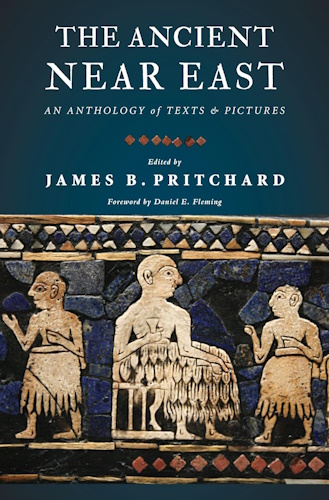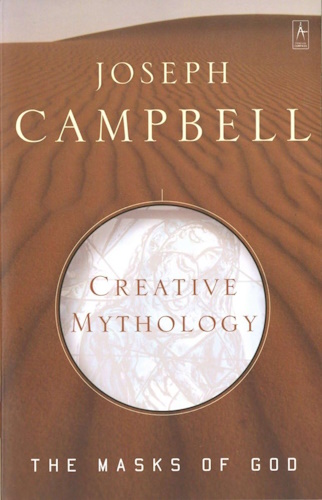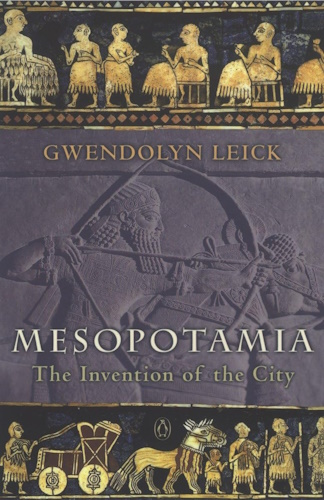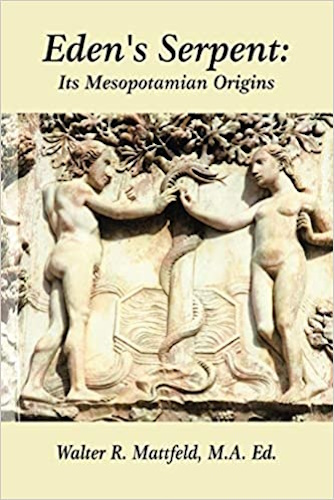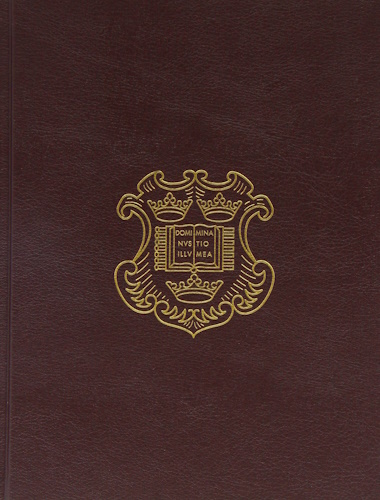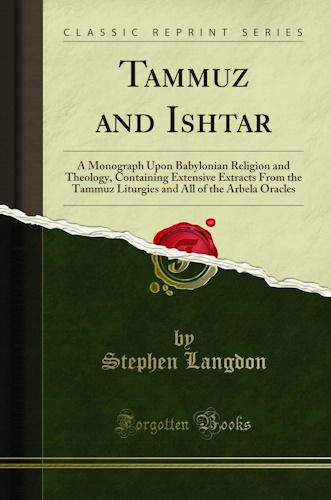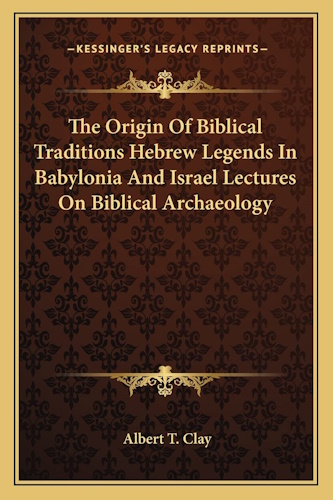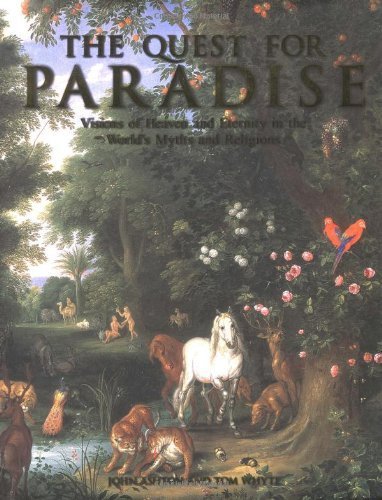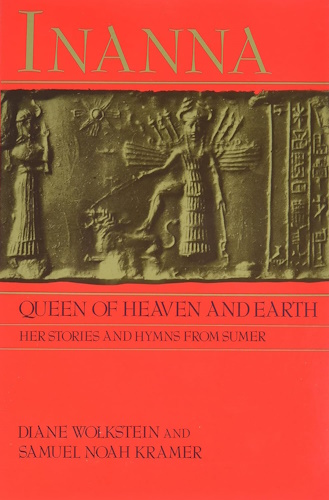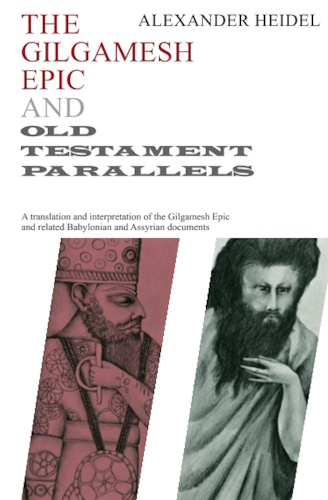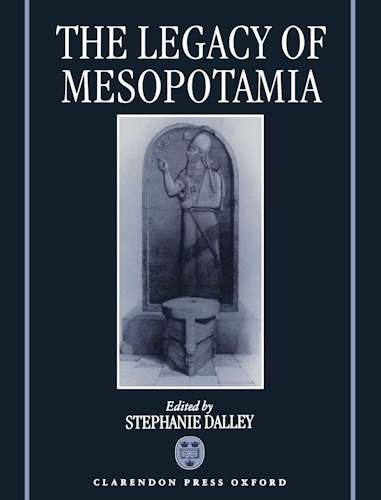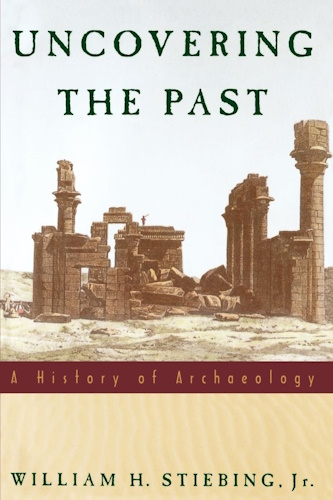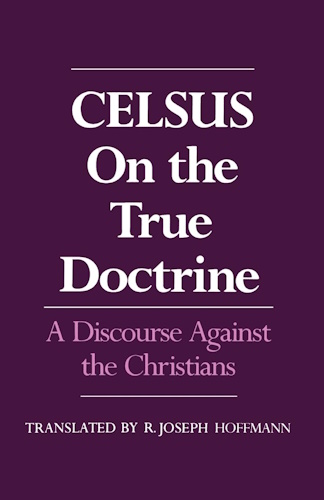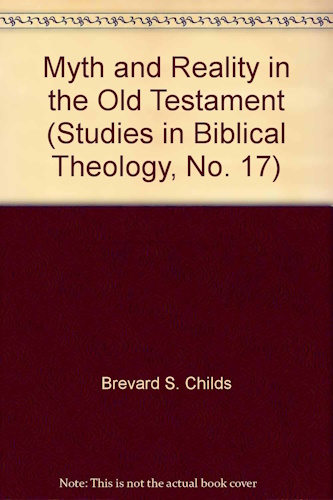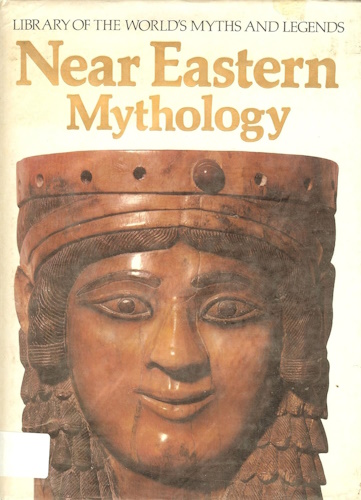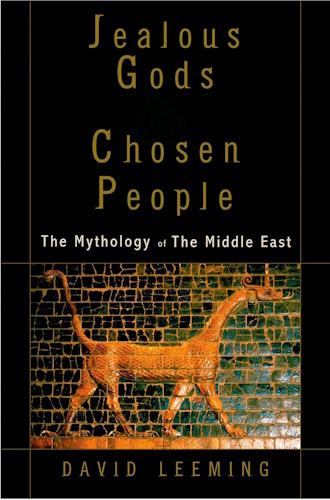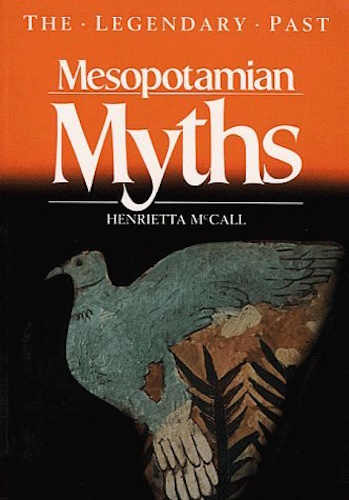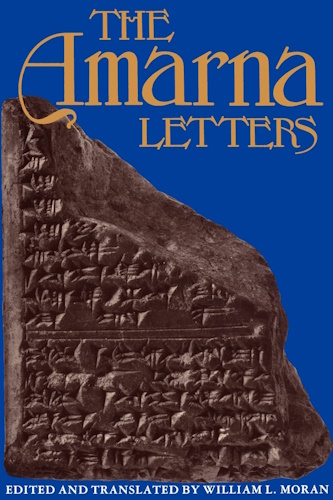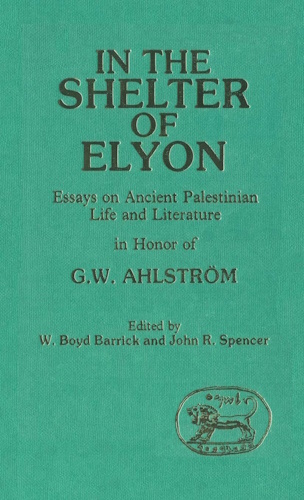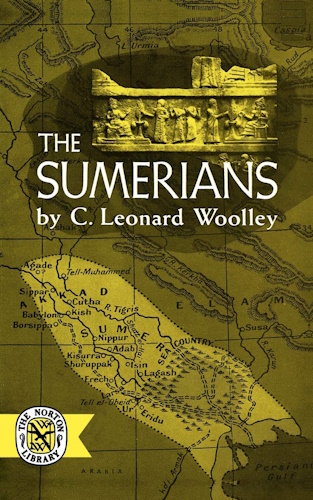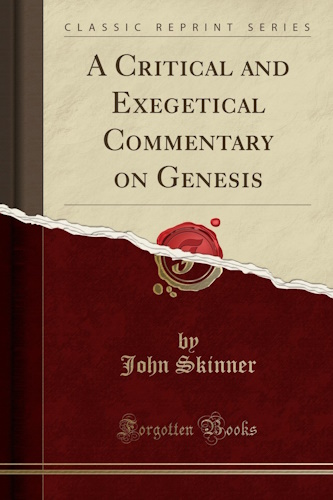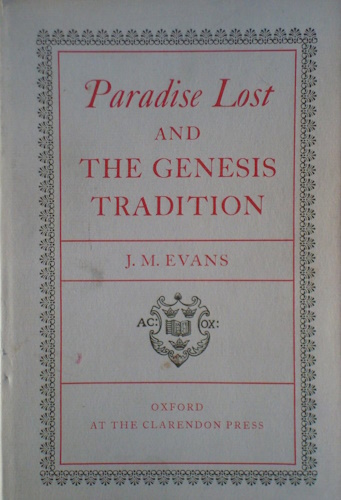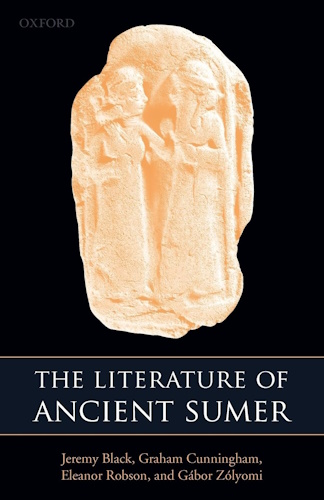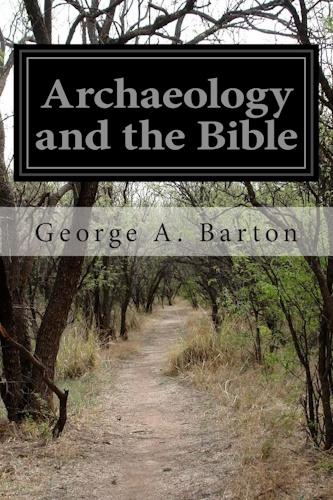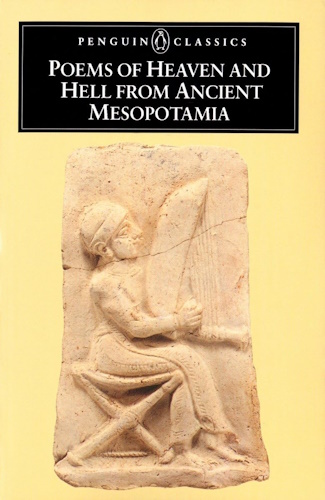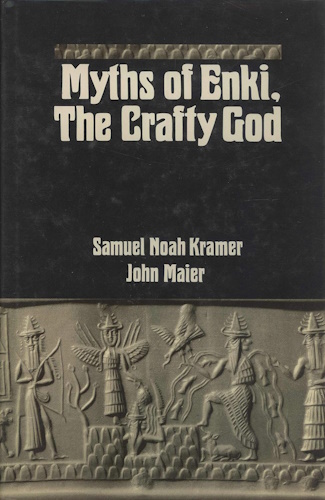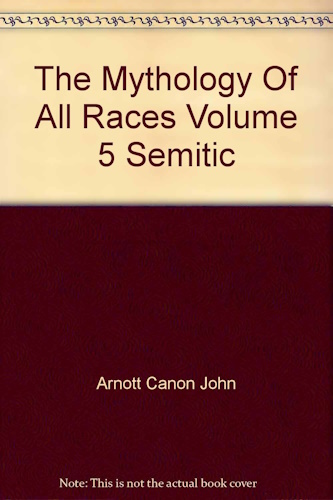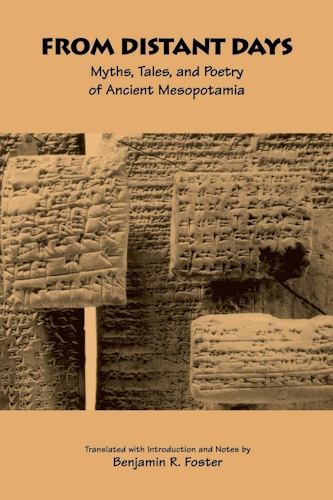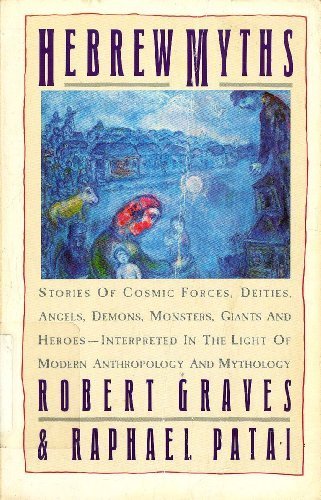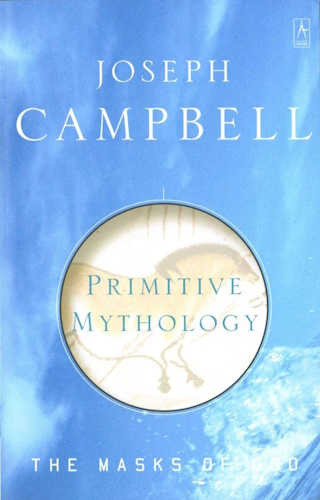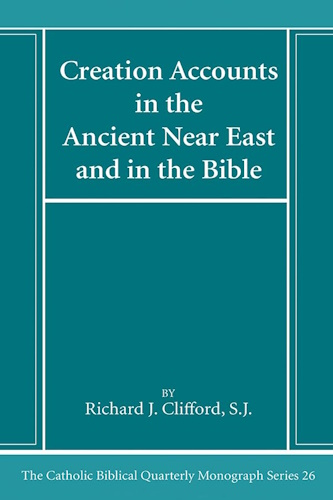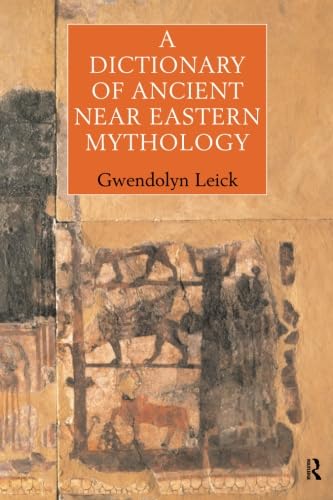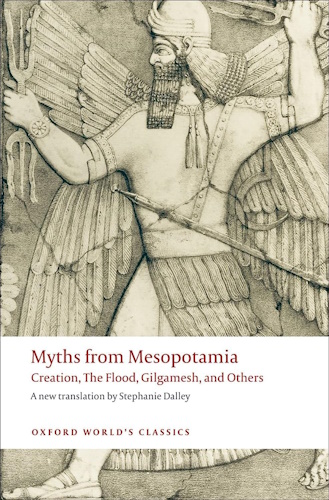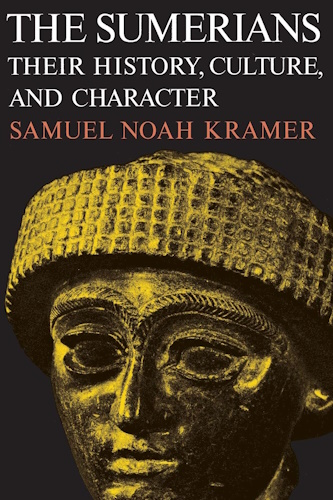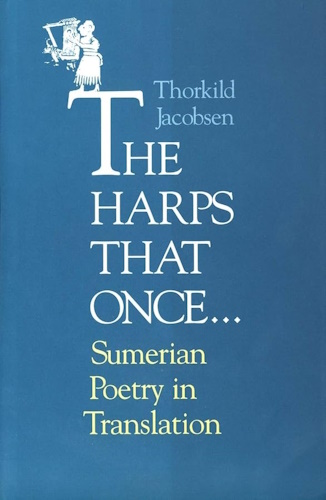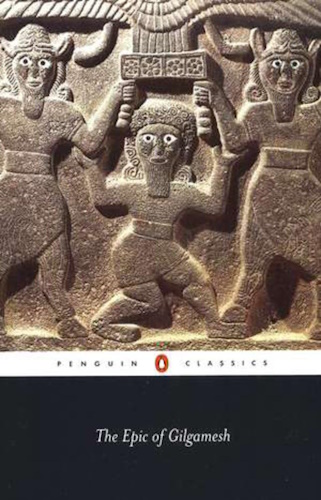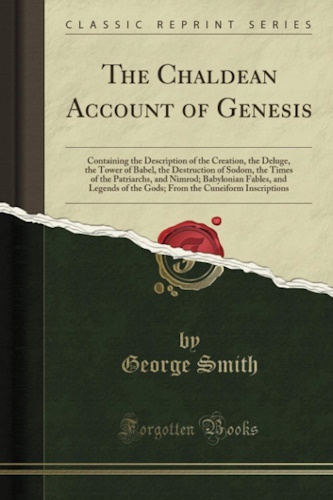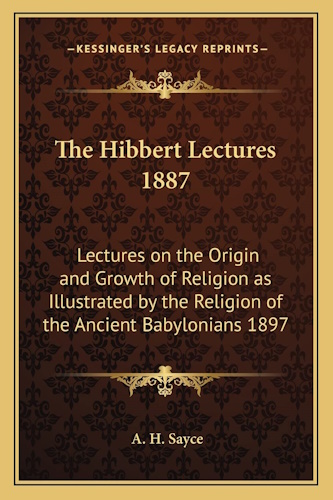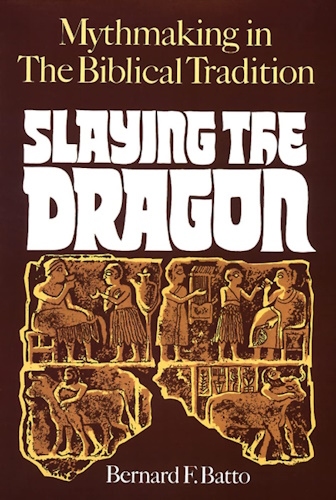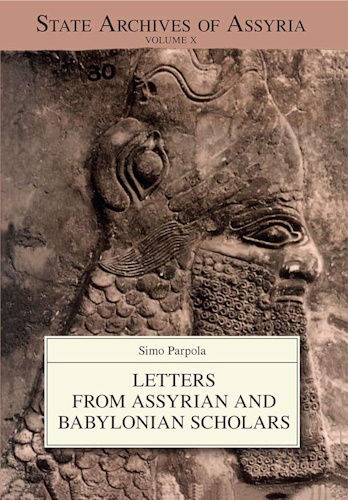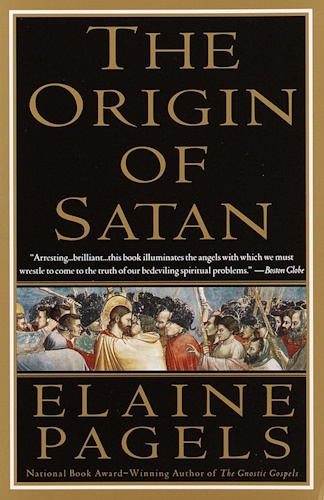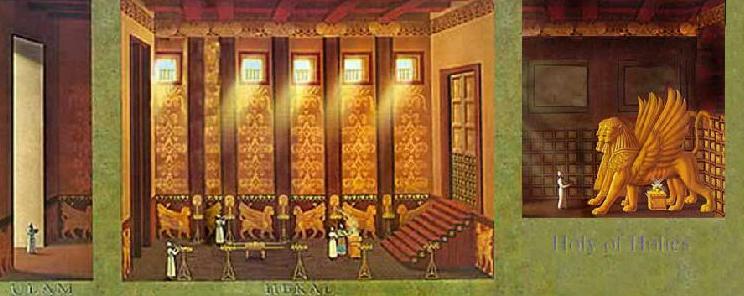![]()
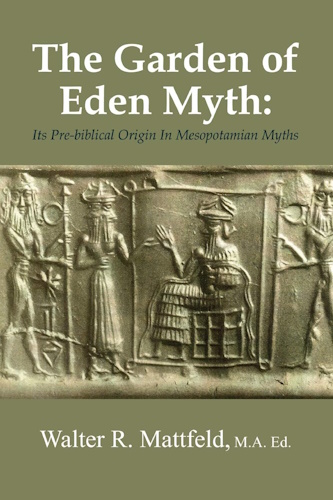
Bible Origins
Genesis' Literary Borrowing:
Adam and Eve and Their Prototypes:
Enkidu and the Temple Courtesan Shamhat
From the Epic of Gilgamesh
Part One
by
Walter Reinhold Warttig Mattfeld y d la Torre, M.A. Ed.
e-mail contact
23 October 2004
Revisions through: 10 March 2015
![]()
Pictures, Photos, Drawings, Images and Illustrations
of
Gilgamesh, Enkidu and Huwawa (Humbaba)
of the
Epic of Gilgamesh
from various
Ancient Near Eastern Art Forms
Please scroll down for various _pictures, drawings, photos, images, illustrations and art_ of Enkidu, Shamash and Gilgamesh portraying events appearing in The Epic of Gilgamesh. Most of these examples are modern impressions in clay of ancient cylinder seals from the 3rd-1st millenniums B.C.
It must be emphasized here that I do _not_ understand that the Hebrews are "copying" the Mesopotamian myths, they are taking various motifs and concepts appearing in these myths and transforming them via "new twists" creating new names for the protagonists, new locations, and changing the sequence of events to present a "new story" about primeval man's origins which in effect _denies, refutes and challenges_ Mesopotamian notions and beliefs.
This article in a nutshell:
For over a hundred years, 1898 to 2008, various professional scholars posessing PhDs in the fields of Assyriology, Ancient Near Eastern and Biblical Studies have proposed that Adam and Eve are recasts of Enkidu and Shamhat from the Epic of Gilgamesh. In 1898 Professor Jastrow of the University of Pennsylvania, Philadelphia, made such a proposal and Professor Skinner in 1910 of Westminster College, Cambridge, England also noted the same parallels. More recently, in 1963 Professors Robert Graves and Raphael Patai identified Adam and Eve as being later Hebrew recasts of Enkidu and Shamhat. Professor Joseph Blenkinsopp in 1992 of Notre Dame noted the same as well as Professor Theodore Ziolkowski of Princeton University in 2000. In addition other scholars have proposed that Eden's serpent is a recast of the Gilgamesh serpent, please click here for their proposals. I understand that the observations of these various professors, spanning a period of over 100 years, 1898-2000, are correct and this article goes into greater depth in expanding their somewhat brief and cursory observations.
It causes one to to pause and wonder how different life would be today had the Epic of Gilgamesh never been composed, Adam and Eve being recasts of Enkidu and Shamhat. That is to say Adam and Eve are fictious characters, based themselves on earlier fictional characters, Enkidu and Shamhat and fictional events such as Shamhat's supplanting Enkidu's animal companions at the watering hole in the Sumerian edin and her teaching the naked man of edin, _in edin_, that it is wrong to be naked. In other words it is my understanding that the Epic of Gilgamesh is responsible, in part, for the birth of today's three great monotheistic faiths: Judaism, Christianity and Islam.
Apparently sometime before 1875, the famous British Orientalist Sir Henry C. Rawlinson (1810-1895) had expressed the notion that the book of Genesis in the Hebrew Bible probably had its origin in Babylonian concepts as noted by George Smith (1840-1876) who discovered in 1872 the Chaldean version of Noah's Flood in the Gilgamesh Epic while translating cuneiform tablets excavated from the Assyrian King Asshurbanipal's library in Nineveh at London's British Museum (Smith correctly determined that the Epic of Gilgamesh consisted of 12 clay tablets which he published between 1872-1875, he calling Gilgamesh Izdubar):
"Although it was known that Assyria borrowed its civilization and written characters from Babylonia...it could not be guessed beforehand that the peculiar national traditions of Babylonia would be transported to Assyria...as new texts were brought into notice, it became evident that the Assyrians copied their literature largely from Babylonian sources...Attention was early drawn to these points by Sir Henry Rawlinson, who pointed out several coincidences between the geography of Babylonia and the account of Eden in Genesis, and suggested the great probability that the accounts in Genesis had a Babylonian origin."
(p. 3. "The Discovery of the Genesis Legends." George Smith. The Chaldean Account of Genesis...From the Cuneiform Inscriptions. London. Whitingham and Wilkins. 1876. Reprint: 1994 by Wizards Bookshelf. San Diego, California)
Archaeologists have recovered from the ruins of Ur, Genesis' Ur of the Chaldees, the home of Abraham (Ge 11:31) fragments of a clay tablet bearing verses from the Epic of Gilgamesh. Dalley on the Epic of Gilgamesh being found at Ur dating to the early 2nd millennium B.C. (the very time period some scholars date Abraham to):
"...the different versions of the Epic of Gilgamesh...The Old Babylonian tablets written in Akkadian, which date to the early second millennium, in some passages diverge fairly widely from the standard version...They were found at Ur in southern Iraq; at Sippar on the Euphrates above Babylon, and at Ishchali in the kingdom of Eshnunna, east of the Tigris."
(p. 45. "Different Versions of the Epic." Stephanie Dalley. Myths from Mesopotamia, Creation, the Flood, Gilgamesh and Others. Oxford & New York. Oxford University Press. 1989, 1991)
The late Sumerologist Professor Samuel Noah Kramer (1897-1990) suggested that perhaps some of Genesis' motifs and concepts are traceable to Mesopotamia via Abraham who lived at Ur before migrating to Haran and eventually Canaan. I suspect that Kramer is correct and that it probably was Abraham who transformed the Mesopotamian myths regarding the origins of primeval naked man who wandered the edin with wild animals and who gave them and life in the edin up to seek companionship with a naked woman he had encountered in the edin (That is to say Adam and Eve and their leaving of Eden are recasts of motifs associated with Enkidu and Shamhat and their leaving the edin as found in the Epic of Gilgamesh). Israel's forefathers who lived beyond the Euphrates are described in the Bible as being originally Polytheists. Apparently Abraham was a Polytheist too and therefore well-acquainted with Mesopotamian gods and goddeses and the stories about man's primeval origins. Perhaps it was Abraham who, upon repudiating Polytheism, recast the Mesopotamian motifs and concepts?
Professor Kramer on Abraham's birth being possibly circa 1700 B.C. (Which falls in the general period 1800-1700 B.C. when yawi names occur at Kish in Lower Mesopotamia and Mari in Upper Mesopotamia, Abraham having embraced Yahweh as his God while residing at Ur of the Chaldees in Lower Mesopotamia):
Genesis 15:7 RSV
"And he said to him, "I am the Lord who brought you from Ur of the Chaldeans, to give you this land to possess."
Joshua on Israel's patriarchs being originally Polytheists in Mesopotamia, the land beyond the Euphrates River:
Joshua 24:2-3, 14 RSV
"And Joshua said to all the people, "Thus says the Lord, the God of Israel, "Your fathers lived of old beyond the Euphrates, Terah, the father of Abraham and of Nahor; and they served other gods. Then I took your father Abraham from beyond the River and led him through all the land of Canaan, and made his offspring many...Now therefore fear the Lord, and serve him in sincerity and in faithfulness; put away the gods which your fathers served beyond the River and in Egypt, and serve the Lord."
Professor Kramer:
"However, there is another possible source of Sumerian influence on the Bible...Father Abraham himself. Most scholars agree that while the Abraham saga as told in the Bible contains much that is legendary and fanciful, it does have an important kernel of truth, including Abraham's birth in Ur of the Chaldees, perhaps about 1700 B.C. and his early life there with his family."
(p. 292. "The Legacy of Sumer." Samuel Noah Kramer. The Sumerians, Their History, Culture, and Character. Chicago & London. The University of Chicago Press. 1963, 1972)
Professor Hooke on Genesis' Myths :
"The mythological material was specifically affected by this process; hence three main problems confront us in studying the mythology of the Old Testament. First we have to inquire what was the source and original form of the myths which we find there; then what modifications did the Hebrew writers or editors make in the mythological material which they borrowed from Canaanite or other sources; and lastly whether Israel produced any myths of its own.
The final editors of the Old Testament collected most of the mythological material into the first eleven chapters of Genesis but other myths and legends are to be found in fragmentary form scattered through the sagas and poetry of Israel..."
(pp. 104-105. S. H. Hooke. Middle Eastern Mythology. Penguin Books. Harmondsworth, Middlesex, England. 1966, 1981 [paperback]. Note: The late Samuel Henry Hooke, 1874-1968, was Professor Emeritus of Oriental Languages at Toronto University)
Rogerson understands Genesis was composed in the Exile or shortly thereafter, I understand it was composed in 560 BCE (Emphasis mine) :
"The simple answer to the question of date is that Genesis 1-11 is _part of the larger work_ containing Genesis to 2 Kings...This COMPLETE WORK did not reach its final form until during or after the Babylonian Exile in the sixth century BCE. However, the date of the final editing does not determine the date of the individual items to be found in Genesis 1-11."
(p. 76. "The Date of Genesis 1-11." J. Rogerson. Genesis 1-11. Sheffield, England. JSOT Press [University of Sheffield]. 1991)
It is my understanding that Genesis' motifs and characters, God, Adam, Eve, the Serpent, and Noah, are adaptations and transformations of characters and events occurring in earlier Near Eastern Myths. In some cases several characters and motifs from different myths have been brought together and amalgamated into Genesis' stories.
Lambert, has made a very important observation regarding the manner in which Mesopotamian mythographers worked:
"The authors of ancient cosmologies were essentially compilers. Their originality was expressed in new combinations of old themes, and in new twists to old ideas."
(p.107, W.G. Lambert, "A New Look at the Babylonian Background of Genesis," [1965], in Richard S. Hess & David T. Tsumra, Editors, I Studied Inscriptions From Before the Flood. Winona Lake, Indiana, Eisenbrauns, 1994)
I believe Lambert's observation can be applied to the Hebrews who were combining old themes and putting "new twists" to old ideas. My research indicates that, at times,"reversals" or "inversions"are occurring in the Hebrew transformation and reinterpetation of the Mesopotamian myths. These "reversals," as I call them, can take the form of different characters, different locations for the settings of the stories, and different morals being drawn about the nature of God and Man's relationship.
Another scholar, Wenham, made another important observation about Genesis, it is apparently a polemic, challenging the Mesopotamian view of the relationship between God and Man-
"Viewed with respect to its negatives, Gen 1:1-2:3 is a polemic against the mythico-religious concepts of the ancient Orient...The concept of man here is markedly different from standard Near Eastern mythology: man was not created as the lackey of the gods to keep them supplied with food; he was God's representative and ruler on earth, endowed by his creator with an abundant supply of food and expected to rest every seventh day from his labors. Finally, the seventh day is not a day of ill omen as in Mesopotamia, but a day of blessing and sanctity on which normal work is laid aside. In contradicting the usual ideas of its time, Gen 1 is also setting out a positive alternative. It offers a picture of God, the world, and man...man's true nature. He is the apex of the created order: the whole narrative moves toward the creation of man. Everything is made for man's benefit..."
(p.37, Vol. 1, "Explanation," Gordon J. Wenham, Genesis 1-15 [Word Biblical Commentary, 2 vols.], Word Books, Waco, Texas 1987, ISBN 0-8499-0200-2)
Lambert's and Wenham's observations are "keys" to understanding how and why Genesis was formatted in the manner it now appears. In other articles posted on this website I have explained why I believe that Genesis was composed in the Exilic era (ca. 560 BCE), I accordingly understand that the Ancient Near Eastern myths and their motifs being utilized by Genesis' author, are of periods preceeding 560 BCE.
The Epic of Gilgamesh is required reading for many College Sophmores in World Literature classes in the U.S.A.
Not generally known to these students is the fact that for over 100 years some professional scholars (possessing PhDs and trained in Ancient Near Eastern Religions) who have studied the origins of the Bible have proposed that motifs appearing in the Epic of Gilgamesh appear to have been transformed and assimilated to Adam and Eve in the Garden of Eden account.
Enkidu is portrayed as naked, unaware it is wrong to be naked, wandering the Mesopotamian plain or steppe with wild animals for companions. He espies a naked woman at a watering hole in the steppe and mates with her.
Like Adam, Enkidu was a created being, he has no mother or father. Like Adam, he gives up his animal companions for the companionship of a naked woman (Shamhat). She convinces him to leave the steppe and when he agrees she presents him clothing and thus both clothe their nakedness upon leaving the watering hole in the steppe, just as Adam and Eve clothe their nakedness before leaving Eden's garden.
What is _not_ realized by many students _including some College instructors_, as they read the Epic of Gilgamesh in English, is that the word being rendered "steppe," "plain" or "the wild" is _not_ always Akkadian (Babylonian) _seri_, sometimes its a Sumerian logogram transliterated into English as _EDIN_ which was "commonly" used in _lieu_ of seri as a type of "shorthand" (Please note: Some professional scholars prefer to render Sumerian edin as eden, so it can appear under either spelling in the professional literature). My thanks to Professor Andrew George for alerting me that the Akkadian scribe is _not consistent_ in writing the word translated as the wild, wilderness, desert, steppe, plain: Some times he spells the word out as Akkadian s-e-r-i (tse-ri), other times he renders the word by the Sumerian logogram edin (a single sign which, in effect, is being employed as a short-hand version for seri/tseri).
Just as a naked Adam gave up his animal companions _in_Eden_ for a naked Eve as more fit companion, so a naked Enkidu gave up his animal companions for a naked Shamhat _in_ EDEN/EDIN_. Just as Adam and Eve left _Eden_ clothed, so Enkidu and Shamhat leave the _EDEN/EDIN_ clothed. Enkidu learned _in_ EDEN/EDIN_ it was wrong to be naked _after_ his exposure to a naked woman, Shamhat, who presented him some of her clothing to wear. Like Enkidu, Adam, _after_ being exposed to a naked woman, Eve, _in_Eden_, comes to realize it is wrong to be naked too.
Naked Enkidu's heart's "_delight_" was the water of EDEN'S/EDIN'S watering hole. I understand that the Hebrews took this motif of a primeval naked man in EDEN/EDIN "_delighting_" over water and _morphed_ EDEN/EDIN into the Hebrew `eden (English: EDEN) meaning "delight" or place "well-watered."
Please scroll down (below) for additional details on the appearance of the Sumerian logogram _EDEN/EDIN_ in the Epic of Gilgamesh being a substitution for the Akkadian word _seri_ or _seru_, meaning "steppe," "plain" or "the wilds."
Other Epic of Gilgamesh Articles of interest:
Please click here for How the Hebrew Sabbath was derived from the Epic of Gilgamesh
Please click here for How Noah's Flood was derived from the Epic of Gilgamesh
Please click here for How Eve was derived from Shamhat of the Epic of Gilgamesh
Please click here for How Adam was derived from Enkidu in the Epic of Gilgamesh
Please click here for How the Garden of Eden was derived from the Epic of Gilgamesh
Please click here for how the Tree of Knowledge of Good and Evil was derived from the Epic of Gilgamesh
Jastrow (1861-1921) a Polish born Jewish Rabbi and a Professor of Semitic Languages and Literature at the University of Pennsylvania, Philadelphia, had, by 1898, noted that Adam and Eve appeared to be recasts of Enkidu and Shamhat of the Epic of Gilgamesh. In 1898 Enkidu was known to scholars as Eabani and Shamhat as Ukhat, while Gilgamesh was being rendered as Izdubar, these being their Akkadian names (their Sumerian names being Enkidu, Shamhat and Gilgamesh or Bilgamesh).
Jastrow (1898) on Eabani (Enkidu) "mating with" the wild animals of the steppe (Sumerian steppe being rendered as edin) before his being aware of the existence of womankind:
"It would appear from these lines that previous to the coming of Ukhat, Eabani had satisfied his desire on the beasts. In Ukhat, however, he found a worthier mate, and he accordingly abandons his former associates to cling to her.
"He yields and obeys her command.
In the wisdom of his heart he
recognized a companion..."
(p. 478. Morris Jastrow, Jr. The Religion of Babylonia and Assyria. Boston. Ginn & Company. 1898. pp. xvi + 780)
"The creation of Eabani recalls the Biblical tradition of the formation of the first man, and Ukhat appears to be the Babylonian< equivalent to the Biblical Eve, who through her charms entices Eabani away from the gazelles and cattle and brings him to Uruk, the symbol of civilized existence. It is significant that in the Biblical narrative, the sexual instinct and the beginnings of culture as symbolized by the tree of knowledge are closely associated. According to rabbinical traditions, the serpent is the symbol of the sexual passion. Eve obtains control of Adam with the aid of this passion. In the episode of Eabani, Ukhat, and the hunter - who, be it noted, plays the part of the tempter- we seem to have an ancient legend forming part of some tradition regarding the beginnings of man's history, and which has been brought into connection with the Gilgamesh epic,-when and how, it is impossible, of course, to say."
(p. 476. Morris Jastrow, Jr. The Religion of Babylonia and Assyria. Boston. Ginn & Company. 1898)
Jastrow on Eve's name possibly being related to Ukhat's (Shamhat):
"It is to be noted that in the Yahwistic narrative, Adam is in close communication with the animals about him (Gen. ii.20). It is tempting also to connect the Hebrew form of Eve, Khauwah (or Khauwat) in some way with Ukhat, not etymologically of course, but as suggestive of a dependence of one upon the other, -the Hebrew upon the Babylonian term. Professor Stade...commenting upon Gen. ii.20, points out that Yahwe's motive for asking Adam to name the animals was the hope that he would find a 'helpmate' among them. In light of the Babylonian story of Eabani living with animals, Stade's suggestion receives a striking illustration." (footnote 879. Jastrow. 1898)
Professor Jastrow noted the "parallels" between Enkidu (Eabani) and Ukhat (Shamhat) and Adam and Eve regarding a woman being blamed for a man's demise (Sadu is the "Hunter" who brought Ukhat to the watering hole in the steppe):
"Eabani bewails his fate. He curses Ukhat, whom, together with Sadu, he holds responsible for having brought death upon him. In Genesis, it will be recalled, death likewise is viewed as the consequence of Adam's yielding to the allurements of Eve. Special significance, too, attaches to the further parallel to be drawn between Adam's punishment and Eabani's fate. Dust thou art, and unto dust shall thou return applies to Eabani as well as to Adam. He was formed of clay, as we have seen, and when he dies he is turned to clay."
(p. 440. Morris Jastrow, Jr. The Religion of Babylonia and Assyria. Boston, New York, Chicago, London. Ginn & Company. 1898. Reprint by the Dodo Press, United Kingdom)
Jastrow in an article (1899) noted attempts as early as 1875 by George Smith to identify some of the characters in Genesis with Babylonian personages appearing in myths (Smith thought Gilgamesh, who he called Izdubar, was Genesis' Nimrod):
"Attempts have been made at various times to discover traces of the story of Adam and Eve among the Babylonians."
(p. 193. Morris Jastrow Jr. "Adam and Eve in Babylonian Literature." pp. 193-214. The American Journal of Theology. Volume 15. No. 4. July 1899)
Harper's (1899) review of Jastrow (1898) noting Jastrow's attempt at identifying parallels between Genesis' Adam and Eabani of the Epic of Gilgamesh and Adapa of the Adapa and the Southwind myth (Note: I am in agreement with Jastrow, that Eabani/Enkidu and Adapa "are the principal characters" that have been recast as Adam):
"...the Old Testament are the author's views (some old, some new) on the following subjects: Parallelism between Adam and Eabani and between Adam and Adapa..."
(p. 753. Robert Francis Harper's review of Morris Jastrow Jr. The Religion of Babylonia and Assyria published in 1898. Cf. pp. 753-756 in The American Journal of Theology. Volume 3. No. 4. October 1899)
Jastrow (1899) claims he is the first scholar to realize Adam and Eve are recasts of Eabani (Enkidu) and Ukhat (Shamhat) of the Epic of Izdubar (Epic of Gilgamesh) after reviewing earlier scholars' attempts to find a Babylonian counterpart, notably Professor Archibald Henry Sayce of Oxford in 1892 claiming Adapa of Adapa and the Southwind myth was recast as Adam:
A few years ago, Sayce made an attempt to prove...Adapa...should be read Adama...the counterpart of the biblical Adam...There is, however, another phase of the Adam and Eve story to which a Babylonian counterpart exists, but which, so far as I can see, has escaped the attention of scholars...I shall present my thesis...for the Gilgamesh epic, where as I shall endeavor to show, this counterpart is to be found, is the last place where one would think of looking for any parallel to the biblical tale of Adam and and Eve. The Gilgamesh epic..." (pp. 194, 197-8. Morris Jastrow, Jr. "Adam and Eve in Babylonian Literature." The American Journal of Semitic Languages and Literature. Vol. XV. July 1899. pp. 193-214)
Jastrow (1914) on Enkidu, his "Engidu," being a prototype of Adam as a "first man," refers the reader to his two works (1898 and 1899) on Enkidu as a prototype of Adam:
"Gilgamesh is thus brought into direct association with a figure, Engidu, who embodies probably a tradition of the first man and of the early condition of man on earth. See the analysis in the author's Religion of Babylonia and Assyria, chapter XX III..."Adam and Eve in Babylonian Literature," in the American Journal of Semitic Languages, vol. XV, pp. 193-214."
(p. 209. "Views of Life After Death." Morris Jastrow, Jr. Hebrew and Babylonian Traditions, The Haskell Lectures Delivered at Oberlin College in 1913, and since Revised and Enlarged. New York. Charles Scribner's Sons. 1914)
Reverend Worcester (1901) of St. Stephen's church in Philadelphia, Pennsylvania, in essence, accepted the earlier proposals of professional Assyriologists that some of Genesis' motifs regarding Adam and Eve and the Garden of Eden were later recasts of concepts appearing in the Adapa and the Southwind myth as proposed by A.H. Sayce (1893) as well as the Epic of Gilgamesh (his epic of Izdubar) as proposed by M. Jastrow Jr. (1898) :
"Let us next turn to Eabani, whom we may regard as a Babylonian counterpart of Adam...At the present time I do not hesitate to say that if there is any counterpart in Babylonian literature to the story of Adam and Eve and the Garden of Eden, we find that counterpart in the epic of Izdubar...There is one other Babylonian legend which, as many scholars have suggested, may have contributed to form a portion of the history of Adam...Adapa, a fisherman...under the protection of his patron Ea...In some respects the legend of Adapa reminds us more of Genesis than it does of the epic poem."
(pp. 250, 251, 253. Reverend Elwood Worcester, Doctor of Divinity. Genesis In the Light of Modern Knowledge. New York. McClure, Phillips and Company. 1901)
Worcester apparently understood that Genesis' author had taken motifs from the Epic of Gilgamesh (his Epic of Izdubar) and Adapa and the Southwind myth and after having stripped them of their polytheism, recast them into a nobler, "more correct understanding" of the relationship between Man and his Creator:
"Our author used material more or less common to the rest of the world...when we see what form these old myths take in the mind of our writer, how all their impurity, their folly, their polythesism disappear when they become before us as living symbols of deep, spiritual truths, we feel more than ever that the sacred authors were well and truly guided, and we marvel that they were able to make so much out of so little."
(p. 256. Reverend Elwood Worcester, Doctor of Divinity. Genesis In the Light of Modern Knowledge. New York. McClure, Phillips and Company. 1901)
Skinner (1910) a Professor of Old Testament Language and Literature at Westminster College, Cambridge, England also noted the parallels between Eabani (Enkidu) and the Harlot (Shamhat) in the Epic of Gilgamesh and Adam's forsaking his animal companions for Eve:
"The legend of Eabani, embedded in the Gilgamesh Epic...seems to present us...with a type of primitive man. Eabani, created as a rival to Gilgamesh by the goddess Aruru from a lump of clay, is a being of gigantic strength who is found associating with the wild animals, living their life, and foiling all the devices of the huntsman. Eager to capture him, Gilgamesh sends with the huntsman a harlot, by whose attractions he hopes to lure Eabani from his savagery. Eabani yields to her charms, and is led, a willing captive, to the life of civilisation:
When she speaks to him, her speech pleases him,
One who knows his heart he seeks, a friend.
But later in the epic, the harlot appears as the cause of his sorrows, and Eabani curses her with all his heart. Apart from its present setting, and considered as an independent bit of folklore, it cannot be denied that the story has a certain resemblance to Genesis 2:18-24. Only, we may be sure that if the idea of sexual intercourse with the beasts be implied in the picture of Eabani, the moral purity of the Hebrew writer never stooped so low...Far more instructive affinities with the inner motive of the story the Fall are found in the myth of Adapa and the South-wind, discovered amongst the Tel-Amarna tablets, and therefore known in Palestine in the 15th century B.C."
(pp. 91-92. "The Origin and Significance of the Paradise Legend." John Skinner. A Critical and Exegetical Commentary on Genesis. Edinburgh, Scotland. T. & T. Clark. 1910. Revised edition 1930. Reprint 1994)
Professor Blenkinsopp (1992) of Notre Dame University on Atrahasis and Gilgamesh motifs in Genesis:
"...just as Genesis 1-11 as a whole corresponds to the structure of the Atrahasis myth, so the garden of Eden story has incorporated many of the themes of the great Gilgamesh poem."
(pp. 65-66. "Human Origins, Genesis 1:1-11:26." Joseph Blenkinsopp. The Pentateuch, An Introduction to the First Five Books of the Bible. New York. Doubleday. 1992. ISBN 0-385-41207-X)
Ziolkowski (2000), Professor Emeritus of Princeton University on the Hebrews recasting of earlier motifs associated with the Epic of Gilgamesh and Adapa and the Southwind myth in Genesis' account of the Garden of Eden:
"...biblical scholars have long been aware that the Genesis account is based on cosmological legends and mythological elements known to various peoples of the ancient Near East—in particular the image of a garden of the gods containing trees with mysterious powers. The anthropomorphic conception of a god strolling in his garden, as alien to the Hebrew tradition as is the walking and talking serpent, probably also came from another source. Notably, most of the characteristic motifs of the Genesis account are to be found, albeit in wholly different configurations, in the Mesopotamian epic of Gilgamesh."
(p.13. "Near Eastern Sources." Theodore Ziolkowski. The Sin of Knowledge. Princeton University Press. 2000)
"...the harlot tells him, in words anticipating the biblical serpent's, “Thou art wise, Enkidu, art become like a god!” Clothing him with half of her garment, she leads him to Uruk..." (p.14. Ziolkowski)
"...the epic contains virtually all the elements of the biblical account of the Creation, Temptation, and Fall..."
(p.15. Ziolkowski)
"Like Adam, Enkidu is created by a deity from the clay of the earth and spends his early days in naked innocence among the beasts of the field. Then, succumbing to a woman's temptation, he loses his innocence and acquires godlike knowledge. The motifs of a plant of life and the serpent that tricks Adam and Eve out of immortality occur after Enkidu's death in connection with Gilgamesh, who obtains the plant but is prevented from eating of it. Several of these common Mesopotamian elements occur also in the later (fourteenth-century B.C.E.) Akkadian tale of Adapa, who is created by the culture-god Ea as “the model of men,” and to whom is given wisdom but not eternal life." (p.16. Ziolkowski)
Genesis' recasting of earlier motifs and scenarios from Mesopotamian myths is recognized by some scholars as following in the Mesopotamian literary tradition (Abraham the Polytheist being of Mesopotamia and of Ur before becoming a Monotheist at Haran). That is to say scholars have noted that the Mesopotamians were fond of recasting earlier dialogues, scenarios and events into new even contrary formats in later compositions. The readers or listeners, familiar with earlier stories, would "pick-up" on these recastings, _admiring the skill and cleverness_ of the storytellers (just as the Hebrews _cleverly and skillfully_ recast_ certain motifs and scenarios which appeared in earlier Mesopotamian compositions in Genesis' stories of Adam and Eve and Noah's Flood).
Professor Foster (2001) of Yale University on this literary tradition (by the way, I note Adam and Eve is a story about man's acquistion of knowledge forbidden him by his God and man's being denied immortality, themes which appear to have been transformed and recast from the Epic of Gilgamesh, a story about a quest for "forbidden knowledge": How can a man obtain immortality?):
"To a Mesopotamian audience, certain themes of the poem would have been familiar from other popular literary works. The portrayal of human mortality as a consequence of divine selfishness, for example, was well known to them...the divine and human heroes often display imperfections and personal limitations...The partiality of divine justice was familiar to Babylonian readers as well: they would not have been surprised at the unfair condemnation of Enkidu nor at the intervention of the sun god, Shamash, to the crucial advantage of the heroes.
In the epic, the Mesopotamian audience would have recognized passages that occur in other literary works...Enkidu uses lines found also in the poem called "Ishtar's Descent to the Netherworld" in describing his own descent to hell... Mesopotamian readers might have relished the contrast between how this passage was used in the epic and how it was used in the other poem...Gilgamesh uses the same words that Ishtar uses in the other poem...Enkidu curses the female prostitute using the same terms with which the queen of heaven curses the male impersonator of women in "Ishtar's Descent to the Netherworld." These and other allusions to Mesopotamian intellectual tradition suggest that the anticipated audience included people of formal education appreciative of the adroit reuse of stock phraseology.
Mesopotamians expected their literature to stress the importance of knowledge. The significance of Gilgamesh's story lay not so much in the deeds themselves as in the lesson his experience offered to future generations. The Mesopotamians believed that the highest knowledge came to sages of the remote past directly from the gods or through extraordinary events not likely to recur. For their times, they thought that the highest knowledge came from the study of written works of the past."
(pp. xx-xxi. "Introduction." Benjamin R. Foster. The Epic of Gilgamesh. New York & London. W.W. Norton & Company. [A Norton Critical Edition]. 2001)
In agreement with earlier scholars (cf. above) I understand that Genesis' Adam is -in part- drawing from the Epic of Gilgamesh and he is a later recast of Enkidu the naked wild man of the steppe (Akkadian seru, Sumerian edin). Adam's sleep in Eden is Enkidu's 6 days and 7 nights of "sleeping with" Shamhat the temple harlot or coutesan of Uruk in edin-the-steppe. Adam and Eve wearing clothes upon departing the garden in Eden recalls Enkidu and Shamhat leaving edin-the-steppe clothed (actually "steppe" is Akkadian seru, which replaced Sumerian edin). Also echoed is Adapa's change of clothes before leaving Anu's heavenly abode in the myth titled "Adapa and the South Wind." I understand that Genesis' Adam is a fusion primarily of Enkidu of the Epic of Gilgamesh and of Adapa of the Adapa and the Southwind myth. For pictures of Adapa as a fish-man please click here. For Adam being a recast of Adapa in the Adapa and the Southwind myth please click here.
Adam's companions being animals is drawing from Enkidu having only animal companions until the hunter brings a harlot or temple prostitute called Shamhat to the watering hole, enticing Enkidu to lay with her. When, after 6 days and 7 nights of sex, he attempts to return to his animal companions they flee. The harlot, a temple prostitute, asks him, "Why seek companionship with animals, he now possesses knowledge like a god", she provides him "food fit for a god" instead of the grass he ate with the animals, and shares her garments to cover his naked hairy body and they leave the steppe, called seru in Akkadian or edin in Sumerian, and go to meet Gilgamesh in Uruk (biblical Erech of Genesis 10:10). The harlot most likely lies behind Eve, for later, when Enkidu is dying, he curses the harlot for robbing him of his innocence. Before her appearance he roamed naked with animals for companions and ate grass and was not ashamed of his nakedness, just as Adam and Eve were naked and unashamed in Eden. She introduced him to civilization, teaching him that nakedness was wrong, men must be clothed, and to "eat food fit for the gods", perhaps an allusion to the myths that stress that the gods made man to plant, harvest and present food to them so that they need not toil anymore on the earth for their food. Perhaps Enkidu's cursing of the harlot, blaming her for his impending death is behind God's cursing of Eve, telling her she will bear her children in pain and sorrow and that her husband will bear rule over her? We are informed by the Epic of Gilgamesh that the harlot takes Enkidu by the hand "like a MOTHER" and leads him to civilization. Perhaps the biblical notion of Eve meaning "MOTHER of all living" (Ge 3:20) recalls this epithet originally bestowed on the harlot Shamhat? Apparently Enkidu and Shamhat were locked in a sexual embrace _side-by-side_ for 6 days and 7 nights. When sated Enkidu apparently rises _from her side_ to rejoin his animal companions. Was Enkidu's rising from or leaving Shamhat's side recast as Eve being taken from Adam's side while he is asleep in Eden? Enkidu and the Harlot would have had to sleep at intervals, side-by-side, to "restup" and catch their breath for the next bout of lovemaking over the 6 days and 7 nights. So Enkidu's sleeping side-by-side with the harlot may have been recast as Adam's sleep, Eve being "taken" from his side. The Hebrew word for rib is tsela but it can also mean "a side, literally, of a person" (cf. # 6763 Strong's Hebrew and Chaldee Concordance. James Strong. Strong's Exhaustive Concordance).Tsela can also mean a "limping or fall" ("falling") or "adversity" (# 6761 Strong). Perhaps the Hebrews were being playful in that tsela has several connotations all applicable to Adam's "fall" because of his contact with Eve, and Enkidu's "falling" for Shamhat? Enkidu also "fell-back" in that he was unable to maintain the running pace of his former companions the Gazelles.
Could Gilgamesh and Enkidu's attaining access to the trees of the forbidden Cedar Mountain have been reformatted in Genesis as Adam and Eve and the Trees of Knowledge and of Life ? In the Inanna and Utu myth she descends to the earth to eat of cedar trees (eating the cedar nuts, or pine nuts), said act of "eating of a tree" giving her _knowledge_ about sexual matters. In Eden, Adam and Eve have knowledge of their nakedness _after_ eating of a tree and "later" engage in sex and have children. Thus the "wisdom" Adam and Eve attained was not only that they were naked, but of "how" to have sex, like Inanna. Some Jewish traditions (Hasmonean) understood the Tree of Life to a Date-Palm, of interest, is that one of the below seals of the Neo-Assyrian period shows the two adventurers slaying Humbaba (Huwawa) before a sacred Palm-Tree instead of a Cedar Tree. Palm Trees accompanied Cherubim in the Temple of Solomon, cf. 1 Kings 7:36. If I am correct in dating the Primary History, Genesis-Kings to 560 B.C., perhaps the Neo-Assyrian imagery is being drawn from as winged sphinxes are shown guarding a Sacred Date Palm?
Commentators have noted that initially Enkidu possesses a higher sense of "right and wrong" or "justice" than does his counterpart Gilgamesh, whose tyranny at Uruk outrages him. Could this portrayal of Enkidu be what is behind the notion of knowledge about Adam and Eve's acquisition of "good and evil" in the Genesis account? Commentators have also noted that Enkidu's "domestication" by the harlot is a prerequisite for Gilgamesh's "moral" education via his contact with Enkidu (the savage's sense of justice or of "good and evil" tames the outrageous behavior of the "civilized" man).
Enkidu egged Gilgamesh on in the killing of Humbaba. In revenge, Enlil takes Enkidu's life. Could the notion that Enkidu and Gilgamesh "accessed" forbidden trees, cutting them down be -in part- what is behind Adam and Eve's access to forbidden trees, and their losing their lives for violating a God's injunction? Gilgamesh and Enkidu realized they would die like all other men and they wanted to achieve in their lifetimes some act of heroism that would give them fame and thus a type of "immortality," their deeds being recounted for hundreds of years into the future. So, Eabani, the naked man of edin, who was undone by a naked woman in edin (Shamhat), _did_ access forbidden trees, slaying the trees' guardian Huwawa to do so. He paid with his life for this act, and when he learns of his imminent death he curses Shamhat and the Hunter, blaming them for his misfortunes (Recast as Yahweh cursing Adam and Eve). All the ingredients are here from Genesis' garden of Eden: a naked man (Enkidu/Adam), naked woman (Shamhat/Eve), forbidden trees (tree of knowledge and tree of life vs. forbidden Cedar trees), a semi-divine creature to deny man access to the forbidden trees (the biblical Cherubim vs. Huwawa/Humbaba), but recast and transformed into a "new story" in order to _refute, deny and challenge_ the Mesopotamian notions about man's origins and purpose in life.
A note of caution: The below identifications are for the most part, _my own_. Some scholars tend to describe the individual I identify as Enkidu as "the nude hero with curls". I am unaware of _any_ scholar identifying Shamhat on any glyptic art associated with cylinder seals.
Black and Green argue that while some earlier scholars associated the 'nude hero with curls' as being Gilgamesh and the bull-man as being Enkidu, they aver that they are wrong, and that "the nude hero with curls" is a Lahmu:
"There is no basis for the suggestion that the figure of the bull-man in art represents the legendary hero Enkidu." (p. 49. "Bull-man." Jeremy Black and Anthony Green. Gods, Demons and Symbols of Ancient Mesopotamia. London & Austin, Texas. University of Texas Press [in association with the British Museum Press]. 1992.)
"Lahmu ('Hairy') is the name of a protective and beneficent diety, originally associated with Enki/Ea...Figurines of the god, who was represented with long hair and beard (often represented with four or six large curls), were used as foundation deposits to ward off demons and sickness. In art this figure (inappropriately termed the 'Nude Hero') is often closely associated with the kusarikku (see Bull-man)." (p. 115. "Lahmu." Jeremy Black and Anthony Green. Gods, Demons and Symbols of Ancient Mesopotamia. London & Austin, Texas. University of Texas Press [in association with the British Museum Press]. 1992.)
Favoring Black and Green's notion that the Nude "hero" with curls is a Lahmu is the fact that Gilgamesh is NOT portrayed in any text as wandering about NAKED. When his clothes wearout from his wanderings after Enkidu's death, he slays a lion and makes of its skin a garment for himself. Another fact is that no text exists mentioning Gilgamesh as a gate guard for Enki (Ea) in his apsu dwelling (a cylinder seal exists showing Enki seated in his apsu house with two naked Lahmu holding stylized gate/door posts). Gilgamesh is mentioned dwelling in the underworld as a judge of the dead however.
Because Lahmu means "hairy" and Enkidu is described as NAKED and _HAIRY_ before meeting Shamhat in the Epic of Gilgamesh, it may be that Enkidu is a "type" of Lahmu, naked and hairy and of great strength. Lahmu guard entrances and Enkidu positions himself at a doorway to bar Gilgamesh from entering and deflowering a bride on her wedding night. Perhaps a confusion arose of Enkidu then being a "type" of Lahmu, and he is the "nude hero with curls" (instead of he being Gilgamesh) who wrestles with wild animals like cattle and lions. We are told that Enkidu possesses hair like a woman, perhaps an allusion to the curls reaching the nude hero's shoulders? I have suggested below, that the 'nude hero with curls' is possibly Enkidu. There is a problem however: while it is true that Enkidu before meeting Shamhat the harlot roamed about NUDE with gazelles, after his sexual encounter with her, she clothes him and when he meets Gilgamesh in Uruk he is CLOTHED. So, we should expect that any scenes showing Enkidu _with_ Gilgamesh "ought" to show both men as clothed, rather than Enkidu naked and Gilgamesh clothed. Of course, it is possible that the artists of the below seals took some "liberties" and showed Enkidu naked and Gilgamesh clothed to avoid confusion in the spectator's eyes of who was who in the scenes.
Mesopotamian myths portrayed man in the beginning as a beast or animal, naked and eating grass with other animals (cf. the Ewe and Wheat myth) before being separated from his animal companions and dwelling in the gods' cities and working their gardens (cf. the Eridu Genesis myth). Man the beast is civilized by the gods and learns to make and wear clothes. For the Mesopotamians man's acquisition of clothing signals his _end as a beast_ and _becoming like a god_, for in the beginning ONLY the gods wore clothes. The "naked" hero in the below scenes, then, might be Enkidu _before_ his "civilization" by Shamhat, for she introduces him to the wearing of clothes. Shamash as a patron-god of Shamhat and Enkidu apparently was not upset about the naked man of edin-the-steppe acquring the knowledge it is wrong to be naked (Shamhat clothes him before leaving the steppe for Uruk), for the sun-god reminds Enkidu that the harlot is not deserving of his curse, she provided him a fine robe to clothe his nakedness. A chastened Enkidu thereupon pronounces a blessing for the harlot. Genesis has changed the story-line. In the original story, Enkidu and Shamat (Adam and Eve), a God (Shamash) did NOT CURSE the naked man and naked woman. A god did NOT EXPELL THEM from seru/edin "the steppe." A god (Shamash) was NOT UPSET about their covering their nakedness with clothes before leaving seru/edin the steppe.
Below a drawing of a cylinder seal impression found at Ebla, Syria. _The "interpretation" of this seal is my own NOT Porada's (who does _not_ attempt to identify the individuals with Gilgamesh and Enkidu)_. I wonder if the half-bison/half-man is the protector-god of animals Sumerian Shakkan, Akkadian Sumuqan to the right of the lion savaging a domesticated bull wearing a harness? To Shakkan's (?) right is the Hunter (?) who brought Shamhat the harlot to entrap Enkidu . I wonder if the woman to the far left might be Shamhat, her breasts appear to be bared. Could the kneeling (a wrestling position?) naked bearded individual holding up four heads be Enkidu? Perhaps the four heads, two of a man and two of a lion represent the enemies (lions and men) of the gazelles, bison, and cattle who were Enkidu's companions and his holding them over his head symbolizes his successful efforts in "overthrowing" them as a "wrestler," protecting his animal companions as the naked wild man of the steppe (Sumerian: edin, Akkadian:seru); the ropes (?) about his shoulders might symbolize "the snares" or "traps" set by the Hunter which Enkidu has "ripped apart" in order to protect his animal friends? The unusual dress of Shamhat (?) and the Hunter (?) has been described as "tufts of wool" by Porada, suggesting for me a sheepskin garment or kilt as worn by Sumerian men and women in art forms of the 4th-3rd millennium B.C. (However Sumerian women tend to be shown with their breasts covered or partially covered by the sheepskin garment which usually crosses one of their shoulders). Could Shamhat's hand grasping the bull's neck/nape and tail mean she has triumphed over the beasts that once were the companions of Enkidu (he roamed with gazelles)? Could the bull-man be the protector-god of wild animals Sumerian Shakkan, Akkadian Sumuqan? His hand grasping the neck/nape and tail of the lion indicate he was a protector of the gazelles defending them from predators like lions as well as man the hunter? If the man wearing the sheepskin kilt is the hunter, does his hand on Sumuqan's (?) neck/nape and tail suggest his triumph over this god who protects wild animals? Genesis portrays God making clothes of animal skins for Adam and Eve before expelling them from the garden of Eden, could these "skins" be recalling the sheepskin garments worn by Shamhat (?) and the Hunter (?) in this seal? I understand the Hebrews have recast Shamhat as Eve and Enkidu as Adam, so the below seal, is for me what Eve and Adam "looked like" before the Hebrews recast them (cf. fig. 14. p. 92. Edith Porada. "Syrian Seals From the Late Fourth to the Late Second Millennium." Harvey Weiss. Editor. Ebla to Damascus, Art and Archaeology of Ancient Syria. Washington DC. Smithsonian Institution Traveling Exhibit. 1985. ISBN 0-86528-029-0 paperback).
The below seal shows the woman with apparently BARED BREASTS, the Hunter told Shamhat to BARE HER BREASTS to entice Enkidu to have sex with her.
Professor Speiser (Emphasis mine):
"There he is, O lass, FREE THY BREASTS,
Bare thy bosom that he may possess thy ripeness!
Be not bashful! Welcome his ardor!
As soon as he sees thee, he will draw near to thee.
Lay aside thy cloth that he may rest upon thee.
Treat him, the savage, to a woman's task! Reject him will his wild beasts that grew up on his steppe,
As his love is drawn unto thee."
The lass FREED HER BREASTS, bared her bosom,
And he possessed her ripeness.
She was not bashful as she welcomed his ardor..."
(p. 44. E. A. Spieser. "The Epic of Gilgamesh." James B. Pritchard. Editor. The Ancient Near East, An Anthology of Texts and Pictures. Princeton, New Jersey. Princeton University Press. 1958. paperback)
I understand in the below drawing that the kneeling man is Enkidu with torn-up rope snares set by the Hunter for edin's wild animals. We are told that Enkidu _did_ tear-up_ the Hunter's snares, hence the reason why the Hunter brings Shamhat to the watering-hole to entrap Enkidu and separate him from his animal companions:
Spieser's translation:
"The hunter opened [his mouth] to speak...strength he has...[He filled in] the pits I had dug, [He tore up] my traps which I had [set], the beasts and creatures of the steppe [He has made slip through my hands]..."
(p. 42. E. A. Spieser. "The Epic of Gilgamesh." James B. Pritchard. Editor. The Ancient Near East, An Anthology of Texts and Pictures. Princeton, New Jersey. Princeton University Press. 1958. paperback)

Below, a drawing of a cylinder seal found at Ebla, Syria. I am not sure if this is the same seal as the one above, but just rendered differently by another artist. It appears to be very similar to Porada's (above) copy. However there are "differences" in details. (1) The arrangement of the characters is reversed; (2) The Hunter's (?) hair has a noticable "cowlick" missing in Porada's image. (3) Shamhat's (?) hair is rendered more straight and the eye sockets are not round dots. (4) The bull-man's (Shakkan/Sumuqan?) horns are more carefully delineated, (5) The naked, kneeling Enkidu (?) mastering a lion and man with torn rope snares (?) at his shoulders is less carefully rendered (For the drawing cf. p. 242. figure 8.7.c. Peter M. M. G. Akkermans & Glenn M. Schwartz. The Archaeology of Syria, From Complex Hunter-Gatherers to Early Urban Societies (c. 16,000-300 BC). Cambridge, United Kingdom & New York. Cambridge University Press. 2003. ISBN 0-521-79666-0 paperback).

Enkidu is portrayed in the Epic of Gilgamesh as roaming NAKED the wilderness steppe with wild animals, specifically GAZELLES. Below is a "cropped" impression from a cylinder seal showing the 'nude hero with curls' mastering two lions, holding them upside down, preventing their savaging of A GAZELLE which rises up on its two hind legs. Could this scene be recalling Enkidu who counted GAZELLES among his "feeding companions" before he encountered Shamhat? Is Enkidu "protecting" his Gazelle companions from predatory lions? After having had sex with Shamhat he attempts to rejoin the GAZELLES but they turn and run from him (Gilgamesh had told the Hunter that Enkidu's animal companions would flee from him after his having sex with the harlot and accept him no longer as a companion). Adam is portrayed as having wild animals for companions and he is portrayed not as a carnivore or meat/flesh-eater, but a herbivore, eating only plants and fruits. Enkidu, like Adam is not a flesh-eater either, he too is a herbivore or vegetarian, and thus not a threat to the animals who feed upon grass, like GAZELLES. That is to say the Bible's portrayal of Adam being a vegetarian dwelling peaceably with wild animals is a recasting of Enkidu the herbivore. Adam apparently dwells in peace with flesh-eating lions and is not their enemy in the Bible, contra Enkidu being their nemesis. But I do not expect the Hebrews in recasting the Mesopotamian myths to be slavishly preserving the original storyline, they are "changing" and modifying events and motifs very creatively (emphasis mine in the below quote):
"The wild beasts came to the watering-place to drink.
The creeping creatures came, their heart delighting in water.
But AS FOR HIM, ENKIDU, born in the hills-
WITH THE _GAZELLES_ HE FEEDS ON GRASS,
With the wild beasts he drinks at the watering-place,
With the creeping creatures his heart delights in water...
After he had had his fill of her charms,
He set his face toward his wild beasts.
On seeing him, Enkidu, THE _GAZELLES_ RAN OFF."
(p. 44. E. A. Spieser. "The Epic of Gilgamesh." James B. Pritchard. Editor. The Ancient Near East, An Anthology of Texts and Pictures. Princeton, New Jersey. University of Princeton Press. 1958)
For the below photo cf. p. 77. figure 81. "Early Dynastic III Seal Impression". Frankfort describes this seal thusly (emphasis mine): "In illustration 81 the body of the rampant GAZELLE is still nearly flat, but the hero's body and the lions' hindquarters are truly modeled..." (p. 80. "The Early Dynastic Period." Henri Frankfort. The Art and Architecture of the Ancient Orient. New York & London. Yale University Press. 1954, reprint 1996)
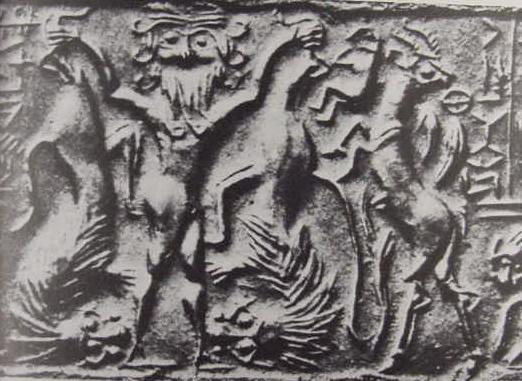
Below, a cropped view of an apparently nude (?) hero (Enkidu?) embracing two GAZELLES, while a spotted panther (leopard?) attacks from the viewer's left. Text reads (emphasis mine): "Panther attacking one of two GAZELLES held by hero, bird at tail of the GAZELLE to left..." [actually the viewer's right] (p.116. Figure 309. Commentary on p. 117. Late Early Dynastic Period Cylinder Seal. Briggs Buchanan. Early Near Eastern Seals in the Yale Babylonian Collection. [Introduction and Seal Inscriptions by William W. Hallo. Ulla Kasten, Editor]. New Haven & London. Yale University Press. 1981)
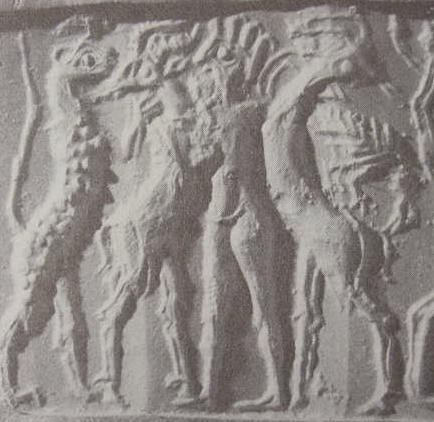
Below, a cylinder seal showing a NAKED bearded Huwawa being slain by a crowned Gilgamesh and a dagger wielding bare-chested Enkidu. A Highly stylized Date-palm with vines and Pomengrates is to viewer's left, replacing the Cedar-trees Huwawa guarded. Note: Inanna who in Sumerian hymns found at Nippur was called nin edin "the lady of edin," in another mythical account, ate of a cedar tree to acquire knowledge. So the cedar trees guarded by Huwawa to deny access to man were also in a sense trees from which knowledge could be obtained by eating. That is to say Genesis' notion of fruit-tree being denied man (Adam) by Yahweh-Elohim, is a recasting of the forbidden Cedars that bestowed knowledge on the "lady of edin," Inanna!
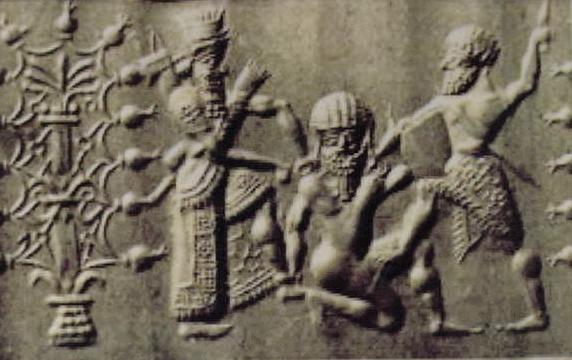
Below, a cylinder seal of a bearded, NAKED Huwawa with very large ears being slain by a crowned Gilgamesh with a sword or dagger and an axe-wielding Enkidu.
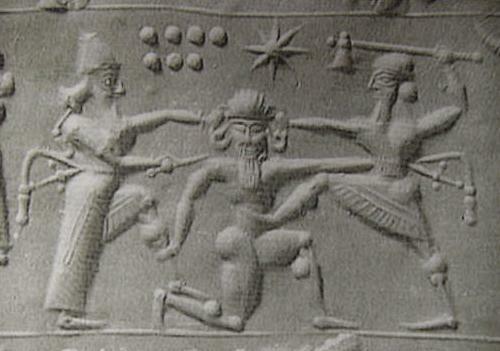
Below, a drawing showing Enkidu (without beard) and Gilgamesh (both are clothed) slaying Humbaba or Huwawa, the half-human monster guardian of the god Enlil's Cedar Mountain Forest forbidden to man. It would appear that the beardless man plunging a sword or dagger into Huwawa is Enkidu; Gilgamesh is probably the bearded man with a raised stick. Differing recensions of the Epic portray Huwawa as being killed by Enkidu, others have the slaying being done by Gilgamesh, a sword is used to decapitate Huwawa's head as a trophy in some accounts. The drawing is after a baked clay molded plaque of the Old Babylonian Period (cf. p. 90. fig. 69. "Gilgamesh." Jeremy Black and Anthony Green. Gods, Demons and Symbols of Ancient Mesopotamia, An Illustrated Dictionary. London. The British Museum Press. 1992).
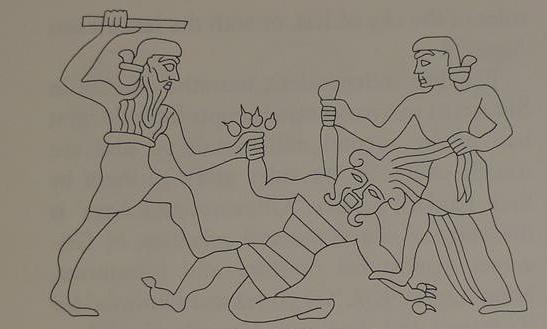
Below, line drawing, Neo-Assyrian period, 10th century B.C. (Luristan, Iran) of a frieze on a bronze beaker (drinking cup) perhaps (?) showing a _clothed_ Humbaba being slain with swords by Gilgamesh wearing a crown as king of Uruk and a clothed Enkidu; the stylized palm tree recalls the cedar forest Humbaba guarded. I understand Huwawa/Humbaba to have been recast as a Cherub that protects God's garden of fruit trees, as Humbaba's duty was to deny access to the cedar trees atop a Lebanese mountain to man (His patron-god being Enlil). Is the "flaming sword" associated with the Cherubim guarding the tree of life a recast of the sword which slew the guardian of the Cedar mountain and its trees? That is to say we have a INVERSION here. A demi-god who could be slain is portrayed as not slayable, and the sword that killed it to gain access to the forbidden cedar trees is now a sword denying access to man of a fobidden tree (another inversion: trees becoming a tree)? Eventually Enlil declares Enkidu is to die for accessing his, Enlil's sacred trees and slaying Humbaba, his servant. Adam is to die for accessing a forbidden tree's fruit.

Below, a modern clay impression from an ancient cylinder seal showing a clothed, bareheaded, axe-wielding Enkidu on the viewer's left and a sword-wielding Gilgamesh, king of Uruk, wearing a crown (Genesis' Erech, Ge 10:10) on the viewer's right, slaying the Bull of Heaven sent to destroy them. The seal is Neo-Assyrian of the 8th/7th century B.C. Please click here for a picture of Enkidu in the Underworld with Dumuzi (biblical Tammuz) and Inanna/Ishtar and Nergal its ruler.

Please Click Here for additional pictures of Enkidu, Gilgamesh and Huwawa (Humbaba).
In the Epic of Gilgamesh Shamash the sun-god (Sumerian Utu) is portrayed as the "protector" of Gilgamesh and Enkidu. He attempts to dissuade the god Enlil from his decision that Enkidu must die for the death of Huwawa/Humbaba the guardian of the gods' Cedar Forest. Enkidu learns in a dream of Enlil's decision that he must die. He prays to Shamash his patron-god to "avenge him" by enacting a curse upon the Hunter and Shamhat blaming them for his impending death. Enkidu receives a shocking reply from Shamash, INSTEAD of the god AGREEING TO CARRY OUT THE CURSE, he REFUSES! Shamash BERATES Enkidu and tells him the harlot is NOT deserving of his curse! She has provided Enkidu with fine clothes befitting a king, given him food to eat fit for gods, and introduced him to Gilgamesh his companion in arms. A CHASTENED Enkidu withdraws his curse and gives the harlot a blessing. I understand that the Hebrews have "reworked" these motifs. Enkidu's curse becomes Yahweh-Elohim cursing Eve for causing a naked man to sin and eat forbidden fruit. The "food fit for gods" given Enkidu was the "bread" grown in the gods' irrigated gardens of Sumer, and Shamhat DID tell Enkidu TO EAT the bread and drink the strong drink and he obeyed her and "became a HUMAN", and then put on a new garment, just as Adam obeyed Eve, and ATE and put on a garment. Enkidu's curse for the Hunter was that Shamash would DIMINISH his PROFITS in everything he turned his hand to do. I understand this motif was reworked by the Hebrews into Yahweh telling Adam his PROFITS WILL BE DIMINISHED, the earth instead of yielding easily its bounty will give him _diminished_ returns or harvests, instead his profits will be brambles and thorns. In other words, I understand that the sun-god Shamash lurks behind Yahweh-Elohim in the Hebrew recasting of this myth as well as Enkidu.
Below is a picture of Shamash seated in a pavillion. Of interest here is the two "bullmen" on Shamash's throne, they have bison legs and tails, the upper part of their bodies having human arms and hands- could this imagery allude to Shamash's patronage of Enkidu the wild naked man of edin the steppe? (cf. fig. 62. p. 151. "Shamash, Ninth Century B.C." Stephen Herbert Langdon. The Mythology of All Races, Semitic. Vol. V. Boston & Oxford. Archaeological Institute of America. Marshall Jones Company. 1931)
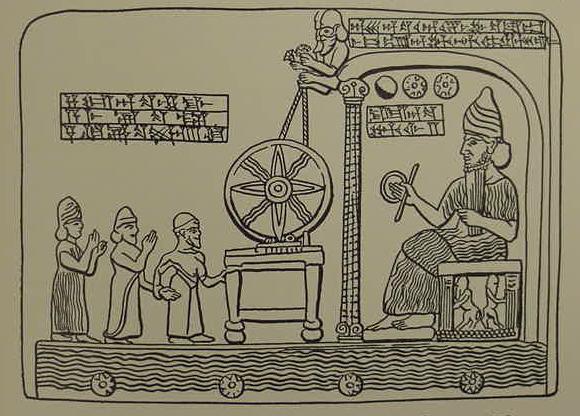
Below, a molded baked clay image of a couple mating on a possible bed. Some suggest the male is the god Dumuzi (biblical Tammuz) and the female is his "bride" or wife Inanna (Ishtar), others have proposed a Mesopotamian king in the "role" of Dumuzi mating with a temple priestess representing Inanna/Ishtar. The imagery for me, applies just as well to the harlot-priestess Shamhat, who tamed the naked wild man of the steppe or edin, Enkidu. If the below female is indeed a temple-priestess assuming the role of her goddess Inanna (Ishtar), then we have an iconic rendering of a naked Shamhat the harlot-priestess of Inanna (Ishtar) from Uruk, who later was recast as Genesis' Eve. If the couple on the bed are intended to be Dumuzi and his bride Inanna, it is interesting to note that in Sumerian Dumuzi was called mulu edin-na "lord of edin" and Inanna was called nin edin-na "lady of edin." Both also bore the Sumerian epithet ama-ushumgal-an-na "the mother is a great serpent-dragon of heaven." Inanna descended to the earth with Utu the Sumerian sun-god to acquire knowledge about sex by eating of various herbs and trees of the kur (kur can mean mountain or land). After consuming these herbs and tree products she asks to be escorted to her mother-in-law's home to fulfil her conjugal duties with her new husband. Worth noting is that the "lady of edin" eats of a cedar tree (cedar nuts or pine nuts are consumed in Middle Eastern dishes as a garnish) to acquire knowledge, sexual knowledge, and Eve of the garden in Eden also eats of a tree to acquire knowledge (after eating of it she later has sex with Adam). I suspect Dumuzi and Inanna are prototypes of Adam and Eve, and are fused with Enkidu and Shamhat (Adam and Eve prototypes who have sex at a watering hole in the Sumerian plain or steppe near Uruk called edin). Hence the below picture of a naked Dumuzi and his bride Inanna show Genesis' pre-biblical prototypes, the naked Adam and naked Eve (man and wife) of eden/edin.
Of interest is that the female appears to be offering her lover her breasts. In the Song of Solomon which is very erotic, praising a young damsel's physical beauty to her lover, the breasts are compared to young roes (deer) and clusters of dates on a date-palm tree, and again as grapes and pomengranates. That is to say the female's breasts are LIKENED AS FRUIT FROM A TREE. Is it possible that Eve's "fruit" offered Adam was Shamhat's breasts to Enkidu? After sex with her and enjoying her "fruits" or "breasts" (?) he attempts to rejoin his animal companions and they flee from him; he realizes they will not accept him anymore as their companion, he thereupon decides to cast his lot with Shamhat and civilized clothes-wearing man in Uruk.
Excerpts from the Song of Solomon alluding to a lover's breasts as two roes (deer), two towers of spices, dates, grapes, pomengranates, some of which are various "fruits," note that the damsel is addressed as a "queenly maiden" which was an epithet of Inanna (Ishtar) the goddess of sex and love as well as of whores and prostitutes. To the degree that a woman's breasts are likened to a tree's "fruit" one might also argue that the woman is "herself," metaphorically speaking, "a fruit-bearing tree"! And, as harlots, whores and prostitutes (as in Shamhat and Inanna) are taboo or forbidden to Israel in the Bible, they become "forbidden fruit and forbidden fruit-trees" whose access is denied to man by Yahweh-Elohim.
Song of Solomon 7:1-14 RSV
"...O queenly maiden...You are stately as a PALMTREE, and YOUR BREASTS ARE LIKE ITS CLUSTERS. I say I will climb the PALM TREE and lay hold of its branches. O may YOUR BREASTS BE LIKE CLUSTERS OF THE VINE, and the scent of your breath like APPLES, and your kisses like the best WINE...let us go into the fields...to the vinyards...see whether the vines have budded, whether GRAPE BLOSSOMS have opned and the POMENGRANATES are in bloom. There I will give you my love...I would give you spiced WINE to drink, the juice of MY POMENGRANATES...Under the APPLE TREE I AWAKENED YOU...O you who dwell in the gardens...Make haste my beloved and be like a gazelle or young stag upon the MOUNTAINS OF SPICES."
Ishtar propositions Gilgamesh for sex asking for the "fruit" of his body:
"Glorious Ishtar raised an eye at the beauty of Gilgamesh:
"Come, Gilgamesh, be thou (my) lover!
Do but grant me of thy fruit,
Thou shalt be my husband and I will be thy wife."
(p. 51. E. A. Spieser."The Epic of Gilgamesh." James B. Pritchard. Editor. The Ancient Near East, An Anthology of Texts and Pictures. Princeton, New Jersey. Princeton University Press. 1958)
Could Enkidu's mating with Shamhat be seen as he partaking of her fruit (a euphemism for sex)?
"The lass beheld him, the savage-man,
The barbarous fellow from the depths of the steppe:
There he is, O lass! Free thy breasts,
Bare thy bosom that he may possess thy ripeness!
Be not bashful! Welcome his ardor!...
The lass freed her breasts, bared her bosom,
And he possessed her ripeness.
She was not bashful as she welcomed his ardor...
[The harlot] says to him, to Enkidu:
Thou art [wi]se, Enkidu, art become like a god!
Why with the wild creatures dost thou roam over the steppe?"
(p. 44. E. A. Spieser."The Epic of Gilgamesh." James B. Pritchard. Editor. The Ancient Near East, An Anthology of Texts and Pictures. Princeton, New Jersey. Princeton University Press. 1958)
Foster (Professor of Assyriology at Yale University) on erotic talk between two lovers, Nabu and Tashmetu, using sexual innuendos alluding to gardens and the plucking of fruit:
"These lines are lover's talk between Nabu and Tashmetu on the occasion of their marriage rite."
""Why, why are you so adorned, [my] Tashmetu?"
'So I can [go] to the garden with you, my Nabu.'
"Let me go to the garden...
"Let me go again to the exquisite garden...
I would see with my own eyes the plucking of your fruit...
Bind your nights to the garden and to the Lord,
Bind your nights to the exquisite garden,
Let my Tashmetu come with me to the garden...
May she see with her own eyes the plucking of my fruit..."
(p. 345. "Love Lyrics of Nabu and Tashmetu." Benjamin R. Foster. From Distant Days, Myths, Tales, and Poetry of Ancient Mesopotamia. Bethesda, Maryland. CDL Press. 1995)
The Hebrews, apparently, somewhat similarly to the above Mesopotamian verses, suggest Fruitfulness is associated with Adam and Eve having sex and progeny:
Genesis 1:27-28
"So God created man in his own image...and said to them "be FRUITFUL and multiply, and fill the earth..."
Genesis 1: 29
"And God said, "Behold, I have given you EVERY PLANT yielding seed which is upon the face of the earth, and EVERY TREE with seed in its FRUIT; you shall have them for food..."
Micah speaks of a child as a "fruit":
Micah 6:6-8 RSV
"With what shall I come before the LORD, and bow myself before God on HIgh ? Shall I come before him with burnt offerings, with calves a year old ? Will the LORD be pleased with thousands of rams, with ten thousands of rivers of oil ? Shall I give my first-born for my transgression, the FRUIT of my body for the sin of my soul ? He has shown you, O man, what is good; and what does the LORD require of you but to do justice, and to love kindness, and to walk humbly with your God?"
A prostitute in Inanna's service is likened to being a source of DELIGHT, an ORCHARD OF APPLE TREES:
"The beautiful maid (ki-sikil), who stands on the street,
The maid, the prostitute, daughter of Inanna...
Sitting down, she is an orchard of apple trees, bringing
delight,
Lying down (she?)...pleasure,
She is a sprig of cedar giving shade..."
(pp. 196-197. "Love Magic and Potency Incantations." Gwendolyn Leick. Sex and Eroticism in Mesopotamian Literature. London & New York. Routledge. 1994. Reprint 2003)
An incantation to make a woman fall in love and have sex mentions the giving of a fruit to her, an apple or pomegranate, she will suck their juices and become a passionate lover.
"Incantation: The beautiful woman has brought forth love.
Inanna, who loves 'apples' and pomegranates,
Has brought forth potency...
Incantation: For a woman to look upon the penis of a man.
The ritual: Either to an apple or a pomegranate
You recite the incantation three times.
You give (the fruit) to the woman (and) have her suck their
juices.
That woman will come to you; you can make love to her."
(p. 202. "Love Magic and Potency Incantations." Gwendolyn Leick. Sex and Eroticism in Mesopotamian Literature. London & New York. Routledge. 1994. Reprint 2003)
I understand that Adam and Eve are recasts of Enkidu and Shamhat. I suspect the Genesis account is alluding in veiled sexual innuendos to the sexual mating of Enkidu with Shamhat in God's command to Adam and Eve to have sex with each other: "be fruitful and multiply," as Shamhat was told to "have sex" with Enkidu. We are told Adam and Eve acquire "knowledge" of good and evil after eating of the fruit, later Adam "KNOWS" Eve, his wife and she bears him a son called Cain. According to Professor Tigay, the Hebrew word "know" can also have sexual connotations, meaning to "have sex with." The Hebrews were fond of word punnings and innuendoes, words with double meanings for those in the audience who possessed a mastery of the language and the many different "veiled" meanings of words.
Ishtar is the Sumerian Inanna, who bears the Sumerian epithets, Inanna edin-na "Inanna of edin" and nin edin-na "lady of edin" (edin is the Sumerian word for steppe) according to hymns found at Nippur extolling Dumuzi and Inannna. Inanna in one myth descends to the earth with her brother Utu the sun-god to acquire knowledge by eating various herbs and or trees on the earth (kur) in order to know how to perform sex with her new bridegroom Dumuzi. After eating of Cedar and Cypress trees and other herbs she asks to be taken to her mother-in-law's house to perform her wifely conjugal duites. Her husband Dumuzi was a king of Uruk (the same city Gilgamesh ruled at), and Dumuzi bore the Sumerian epithet mulu edin-na "lord of edin." Inanna (Akkadian Ishtar) is the goddess of lovemaking (and of whores and prostitutes) and of sex between man and wife. Shamhat the harlot served Inanna/Ishtar as a Temple whore or prostitute.
The below photo is to be found on page 43 of Diane Wolkstein & Samuel Noah Kramer. Inanna Queen of Heaven and Earth, Her Stories and Hymns From Sumer. New York. Harper & Row, Publishers. 1983.
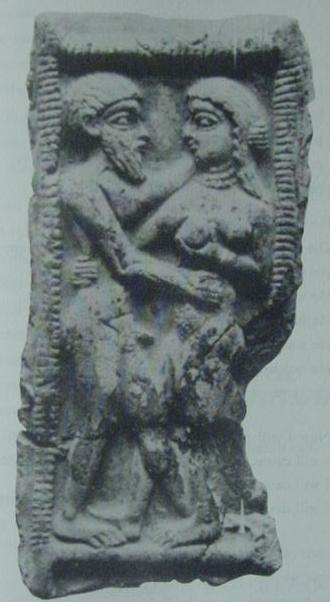
A Sumerian hymn praising Inanna's breast, which is metaphorically portrayed as fields of plants, grain and _bread_ which sustain mankind:
"O lady, your breast is your field,
Inanna, your breast is your field.
Your wide, wide field which pours out plants
Your wide, wide field which pours out grain
Water flowing from on high for the lord, bread from on high
...I will drink it from you."
(pp. 54-55. "Plow My Vulva." Tikva Frymer-Kensky. In the Wake of the Goddesses, Women, Culture and the Biblical Transformation of Pagan Myth. New York. Fawcett Columbine, Ballantine Books. 1993. First edition: 1992 by The Free Press, a division of Macmillan Inc.)
In the Adapa and the Southwind Myth Adapa refuses to eat the "bread of life" which would bestow immortality on him and mankind because his patron God Ea of Eridu had warned him if he ate it he would die. So the "bread" was a _forbidden_ food. When "bread" is presented Enkidu to eat by the shepherds, he balks at eating it, for he has known only the eating of grass with the gazelles. Shamhat tells him he _must_ eat, it is the custom of the land, he obeys and eats, and is then declared to be "a human" (and a beast no longer). So as a beast, fields of grain, fruit trees and bread would be forbidden items for edin's beasts including savage naked man. Inanna's breast is likened to a field of grain and bread, both items being _forbidden_ food for edin's foraging beasts, including naked primitive savage man (Enkidu). We still speak of illicit sex today as partaking of sweet forbidden fruit. To the degree that bread was offered to both Adapa and Enkidu and it was in a sense a forbidden food item for edin's wild beasts, perhaps Genesis statement that Adam "will eat bread in the sweat of his face" (Genesis 3:19) is an allusion or echo of the bread consumed by edin's naked man and woman, Enkidu and Shamhat in the shepherd's camp?
Leick on Enkidu's steppe as a place of danger:
"The gods placed him in the steppe, the archtypical wild place...where...lurked...lawless nomads who 'knew no grain'...Enkidu...is one of the truly wild creatures..."
(p. 255. "Love and Eros in Akkadian Narrative Literature." Gwendolyn Leick. Sex and Eroticism in Mesopotamian Literature. London. Routeledge. 1994. Reprint 2003)
Leick on the steppe Enkidu inhabits (Akkadian: seru, Sumerian: edin) as a "desert" (it is actually semi-arid steppe or plain depending on the season, in the rainy season it has grasses for the shepherds to feed their flocks on):
"The most complex literary reflection on the Mesopotamian prostitute occurs in the Gilgamesh epic. She has the typical professional name of Shamhat, the Voluptuous One, and her functions in the story is to seduce the 'wild man' Enkidu...As a result of their lovemaking Enkidu is alienated from the animals of the desert and is taken to the city of Uruk." (p. 164. "Liminal Sexuality." Gwendolyn Leick. Sex and Eroticism in Mesopotamian Literature. London. Routeledge. 1994. Reprint 2003)
Leick on fruits and gardens as sexual metaphors:
"We have already noted how the language of love is deeply imbued with vegetal imagery. The fruits of the garden are full of voluptousness. The lovers desire each others; 'fruit', and we shall see that the female genitals are likened to a garden, the male member to apple-trees."
(p. 74. "The Bridal Songs."Gwendolyn Leick. Sex and Eroticism in Mesopotamian Literature. London. Routeledge. 1994. Reprint 2003)
Leick comparing Inanna's vulva to a garden bearing much fruit (Note: in the Nippur hymns Inanna has the Sumerian epithet nin edin, "the lady of edin," and she ate of cedar trees upon the earth to acquire knowledge of how to have sex with her huband Dumuzi the mulu edin, the "lord of edin."):
"The two translations differ in detail in line 2, but they also describe the vulva as a flourishing 'garden', 'bearing much yield'."
(p. 122. "Words of Seduction." Gwendolyn Leick. Sex and Eroticism in Mesopotamian Literature. London. Routeledge. 1994. Reprint 2003)
Leick on verses about Inanna's desire for Dumuzi and their mating in the garden of the steppe (garden of edin):
"Me, let me go, let me go, to the garden let me go...
In the garden dwells the man of my heart!"
Dumuzi desires to have sex with Inanna "plowing her field" or vulva with his penis or 'member':
"Oh let me plough the field, let me plough the field!"
(p. 75. "The Bridal Songs." Gwendolyn Leick. Sex and Eroticism in Mesopotamian Literature. London. Routeledge. 1994. Reprint 2003)
Below, another baked clay relief of the "Sacred Marriage" between Dumuzi and Inanna on a bed. Old Babylonian Period. Again, If a temple whore is playing the role of Inanna (Ishtar) with her bridegroom Dumuzi, we have an image of a Shamhat type (cf. p. 157. figure 129. "Sacred Marriage." Jeremy Black and Anthony Green. Gods, Demons and Symbols of Ancient Mesopotamia, An Illustrated Dictionary. Austin, Texas. University of Texas Press. Published in co-operation with the British Museum Press. London. 1992). Of interest here is that some scholars have suggested that Adam's attraction to Eve, the animals not being a fit companion for him, is why a man leaves his father and mother and cleaves to his wife, becoming one flesh (Ge 2:24). That is to say man's sex drive is behind a desire for marriage, and in the Mesopotamian myths it is Inanna (Ishtar) who provides nature with that sex-drive, for animals as well as mankind. When Inanna languished in the underworld for 3 days and nights, the myths tell us procreation stopped on the earth for both animal and humankind.
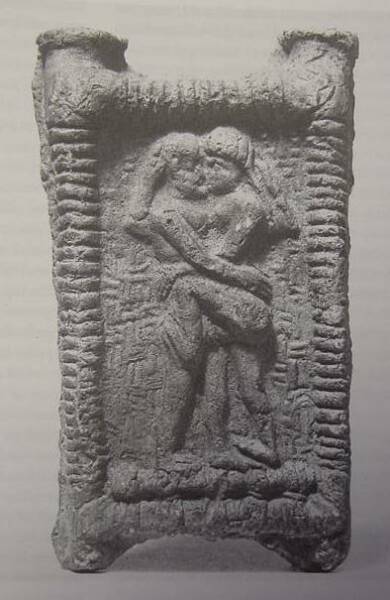
As a temple whore or harlot one of Shamhat's several duties would be to have sex in the temple with paying "Johns" or "Customers", said funds being "donated" to the temple's upkeep. Below, a drawing after a lead votive offering found in a temple showing a "John" having sex with a naked priestess atop an altar (?) with a special incline to accomodate the act of sex. Inanna (Ishtar) fulfilled many roles, she was the "Hierodule of Heaven" or "Courtesan of Heaven" ("polite" scholarly language for a whore or prostitute) and wives beseeched her aid in becoming pregnant.
Black and Green on the below image:
"On Middle Assyrian lead figurines depicting intercourse, the man stands and the woman always rests upon a high structure, usually interpreted as an altar. These figurines may very likely represent ritual intercourse...they are probably in some way associated with the cult of Ishtar (Inana) as goddess of physical love and prostitution, and were, in fact found in her temple at Asshur..."
(pp. 151-152, "prostitution and ritual sex," for the below drawing, cf. p. 152. figure 124. "prostitution and ritual sex." Jeremy Black and Anthony Green. Gods, Demons and Symbols of Ancient Mesopotamia, An Illustrated Dictionary. Austin, Texas. University of Texas Press. Published in co-operation with the British Museum Press. London. 1992)

If my suppositions and those of earlier scholars (1898-2000) are correct about Adam and Eve being a later recasting of Enkidu and Shamhat then the above images you are gazing at dear reader, are of _some_ of the pre-biblical prototypes of Genesis' "Adam, Eve and Yahweh" in the Garden _in_ Eden (Sumerian edin "the-steppe-floodplain" of Sumer, later rendered in Akkadian as seru "steppe").
It goes without saying that if the millions of Jews, Christians and Moslems currently walking this earth were aware that Adam and Eve are nothing more than a later Hebrew recasting and "_sanitizing_" of an earlier 'ribald' Sumerian story about "Whores and their Johns" (Shamhat and Enkidu as well as Inanna and Dumuzi) they would be shocked and refuse to believe it!
Please click here for my article exploring the notion that Yahweh-Elohim was originally a god of sexual abandon and fornification at the Temple of Solomon before being "sanitized" by later religious reformers in the 9th-8th centruies B.C., and that accordingly, cultic prostitutes, male and female, were on the Temple's staff, as alluded to and condemned in the Bible (which I understand was composed circa 560 B.C. in the Exile).
I understand that Enkidu has been recast as Adam and Shamhat as Eve. Genesis has Eve being presented to Adam in a garden located in a place called Eden (the garden's name was _not_ Eden, it was located _in_ a place called Eden). I note that the Epic of Gilgamesh written in Akkadian uses the Sumerian logogram (EDIN) to represent the Akkadian word seru meaning "steppe," as transcribed (cf. below) by Heidel. It is at edin's watering hole that Shamhat encounters Enkidu and has sex with him accomplishing thereby his separation from his animal companions, the gazelles that he eats grass with. I understand that this watering hole became the Hebews' "garden of eden" meaning "delight" because Enkidu's "heart's delight" was the water at this watering hole. So, down through the centuries, the Sumerian location, edin "the steppe," where a naked man who had no father or mother (like Adam) was undone by a naked Shamhat (like Eve), and he, accompanying her, is persuaded to leave edin of his own free will clothed and naked no longer. In other words in the "original" account, the Epic of Gilgamesh, an angry god did _not_ expell the naked man and woman from edin, nor was he outraged that they had covered their nakedess before leaving edin.
The Sumerian word for uncultivated steppeland is edin. The Epic of Gilgamesh although written in Akkadian which renders "steppe" as seru or seri, states unequivocally that Shamhat saw Enkidu at the watering hole as a wild man of "edin" (the steppe). How is it that the watering hole is described as being in _the edin_ instead of being in _the seru_? Akkadian scribes were trained in both Sumerian and Akkadian, they frequently used Sumerian LOGOGRAMS (cuneiform signs) as "substitutes" for Akkadian words. Hence Enkidu "the wild man of the steppe" was written using the Sumerian logogram (EDIN)! The scribe knew upon seeing this logogram that it was synonymous with the Akkadian word seru or seri, meaning steppe.
Professor Spieser on Enkidu's arrival at the watering hole in the steppe (steppe in Sumerian being edin, Akkadian seru), where wait Shamhat the harlot-priestess of Uruk and the Hunter (Note: the below bold print is transliterated by Heidel, which follows, into Akkadian/Babylonian):
"The creeping creatures came, their heart DELIGHTING in water.
But as for him, Enkidu, born in the hills-
With the gazelles he feeds on grass,
With the wild beasts he drinks at the watering-place,
With the creeping creatures his heart DELIGHTS in water-
The lass beheld him, the savage-man,
The barbarous fellow from the depths of the steppe:
"There he is, O lass, FREE THY BREASTS,
Bare thy bosom that he may possess thy ripeness!
Be not bashful! Welcome his ardor!
As soon as he sees thee, he will draw near to thee.
Lay aside thy cloth that he may rest upon thee.
Treat him, the savage, to a woman's task! Reject him will his wild beasts that grew up on his steppe,
As his love is drawn unto thee."
The lass FREED HER BREASTS, bared her bosom,
And he possessed her ripeness.
She was not bashful as she welcomed his ardor..."
(p. 44. E. A. Spieser. "The Epic of Gilgamesh." James B. Pritchard. Editor. The Ancient Near East, An Anthology of Texts and Pictures. Princeton, New Jersey. Princeton University Press. 1958. paperback)
Heidel on Enkidu's heart "delighting" with the water of the watering hole in edin the steppe, Hebrew 'eden means "delight," note also that in 1949 (cf. below) Heidel rendered "steppe" with the Sumerian logogram (EDIN) instead of the Akkadian word seru (emphasis mine):
"The animals came to the water, (and) their hearts were glad.
And as as for him, (for) Enkidu, whose birthplace is the open
country,
(Who) eats grass with the gazelles,
Drinks with the game at the drinking-place,
(Whose) heart DELIGHTS with the animals at the water,
Him, the wild(?) man, the prostitute saw,
The savage man from the depths of the steppe."
(p. 21. "The Epic of Gilgamesh." Alexander Heidel. The Epic of Gilgamesh and Old Testament Parallels. Chicago & London. University of Chicago Press. 1946, 1949, reprint of 1993)
Heidel reproduces the above words from Spieser's translation (which I have rendered above in bold print) from the Epic of Gilgamesh ("he" is in reference to Enkidu):
"...while on Tablet I. 4:7, he is called
itlu (GURUS) sag-ga-sa-a sa-qa-bal-ti seri (EDIN):
"The savage man from the midst of the seru."
(cf. p. 233. Alexander Heidel. "A Special Usage of the Akkadian Term Sadu." pp. 233-235. The Journal of Near Eastern Studies. Vol. 8. No. 3. July 1949)
My thanks to Robert M. Whiting, PhD. of Helsinki, Finland, a professional Assyriologist (Managing Editor of the world-renown Neo-Assyrian Text Corpus Project, The Assyrian State Archives Series) for explaining to me that Heidel's 1949 transliteration reveals that the scribe actually wrote the word "steppe" using the Sumerian LOGOGRAM (EDIN), and that modern scholars "read" (EDIN) as a substitution for Akkadian seru. Heidel's transliteration also reveals that the Akkadian word itlu was actually written as (GURUS) another Sumerian LOGOGRAM. Whiting explained that the use of Sumerian logograms is quite common in Akkadian compositions.
Whiting's explanation solved the mystery for me of how _seru_ the "steppe" came to become Hebrew _`eden_, I realized that the Hebrews had apparently _morphed_ the Sumerian logogram (EDIN), used in _lieu_ of seru in the Epic of Gilgamesh, into 'eden by simply adding an ayin /`/! Hebrew `eden means "DELIGHT," and we are told when Enkidu appeared at the watering hole in EDIN, his heart's "DELIGHT" was its water. So, I understand the Hebrews took this notion of a primal naked man's DELIGHT over water and morphed EDIN's watering hole into Hebrew `eden, a place of DELIGHT (The Mystery solved at long last, after some 3000 years!). That is to say the Epic of Gilgamesh identified Enkidu as the wild man of EDIN with its Sumerian Logogram. Scholars who have studied the evolution of the Epic of Gilgamesh understand that it began as a series of unrelated stories about Gilgamesh and Enkidu composed originally in Sumerian. The Sumerian word for steppe is _edin_, and when these stories came to be later recast and embellished by Akkadian scribes into the Epic of Gilgamesh they apparently "preserved" the earlier Sumerian logogram _edin_ identifying it with the location of Enkidu's wanderings with his herbivore companions the gazelles.
Special Update 13 November 2007 on the appearance of the word _EDIN_ in the Epic of Gilgamesh:
Yesterday (12 November 2007) as I was musing to myself over Heidel's 1949 transliteration of Akkadian seru, seri being rendered by the Sumerian logogram (EDIN), I wondered to myself _just how many times_ does edin, (EDIN), EDIN, appear in this composition?
That is to say was Heidel's transliteration the _one and only occurrence_ of this word in the Epic of Gilgamesh?
I sent an e-mail to Professor Andrew George who had recently authored one of the most comprehensive studies of the Epic of Gilgamesh in its various recensions and posed this question to him. He very graciously replied within 24 hours that EDIN appears _innumerable_ times throughout the 12 clay tablets that make up the Epic of Gilgamesh and he referred me to his own research posted on the internet.
This research is divided into the 12 tablets of the Epic and consists of English transliterations of the Akkadian words appearing in the Gilgamesh texts by verse and line numbers. Professor George provides several recensions for any given verse revealing the variations. To read this research one will need to first download a version of Adobe Acrobat Reader for reading PDF files.
Using the "Find" key from the Adobe Acrobat Reader I plugged in the word edin and I came up with some 74 "hits" for EDIN for the 12 tablets which contain the Epic of Gilgamesh (these 74 "hits" include the various recensions). The Sumerian logogram EDIN appears in various forms (with various suffixes)such as: EDIN-ki, EDIN-su, EDIN-ia, and EDIN-ka.
My thanks to Professor George for directing me to his published research on the internet.
Please click here to access Professor George's English transliteration of the Akkadian words and their appearance in various recensions of the Epic of Gilgamesh, showing the Sumerian logogram EDIN.
EDIN ("read" as Akkadian seru, seri, tseri) apparently has two meanings. Firstly, it means "back" or "upper side," and secondly, by analogy, the uncultivated steppeland that abuts the cultivated and watered lands was envisioned as "the back," (the backland or hinterlands, the wilderness, or the wilds where roamed wild animals: antelope, onagers, lions, and shepherds with goats and sheep).
Professor George alerted me that in his English translation of the Epic of Gilgamesh, he rendered EDIN as "the wild" (cf. Andrew George. The Epic of Gilgamesh. London. Penguin Books. 1999, 2000, 2003).
I have gone through my copy of the aforementioned book and noted "the wild" appears some 74 times! Enkidu is described as born in "the wild," being like a panther of "the wild," and being like an ass of "the wild," while Gilgamesh is described as wandering "the wild" mourning Enkidu's death, slaying and eating the beasts of "the wild" (wild bulls, bears, hyenas, panthers, cheetahs, jackals. wild asses, onagers). Siduri the barmaid and later Uta-napishtim (of Dilmun) asks him why he wanders "the wild" seeking immortality. Gilgamesh wandering about _in_ "the wild" or EDIN after Enkidu's death seeks immortality and Genesis has Adam _in_ an Eden failing to attain immortality and facing death like Gilgamesh and Enkidu. That is to say, Genesis' Eden is associated with the themes of life and death, immortality and mortality; the EDIN wandered by Enkidu and Gilgamesh is _also_ associated with the same motifs or themes.
I have Reginald Campbell Thompson's Epic of Gilgamesh, Text, Transliteration and Notes (Oxford University Press. 1930) and should alert my readers that he does _not_ render steppe with the Sumerian logogram edin (EDIN), instead he renders steppe as seri. In other words you will _not_ find the logogram EDIN "anywhere" in Thompson's English transliteration of this epic.
This research on the pre-biblical origins of Eden and its garden has noted that professional scholars are in disagreement with each other. Some have suggested Genesis' Eden is ultimately derived from Sumerian Edin, others object. The reason for their objection is primarily three reasons:
(1) Genesis' Eden has an ayin accent or phoneme: `eden whereas Sumerian edin does not.
(2) Biblical Eden appears to be derived from `dn, a root meaning "delight, enjoy, lushness, or a place well-watered" whereas Sumerian edin means "back" and refers to the "backland" or uncultivated steppe, sometimes rendered as the wilderness, the wilds, or desert, depending on the scholar.
(3) The argument has been made that the Akkadian (Babylonian) word edinu appears only _once_ in a syllabary and hence its survival down through the ages to become the biblical `eden is rejected. Please click here for A.R. Millard's article on the "Etymology of Eden" (1984) and why some scholars reject Sumerian edin or Akkadian edinu being what `eden was derived from.
Professor Sayce on Eden (1898), note: today Zeru is rendered variously as Seru, Seri, Tseru by modern Assyriologists:
"Eden means delight in Hebrew...The cuneiform inscriptions have, however, cleared up the geography of the garden of Eden. The Sumerian name of the 'plain' of Babylonia was Edin, which was adopted by the Semites under the form of Edinu. Its Assyrian equivalent was Zeru, corresponding to the Arabic Zor, the name still applied to the 'depression' between the Tigris and Euphrates."
(p. 643. Vol. 1. A. H. Sayce. "Eden." in James Hastings, editor, A Dictionary of the Bible, Dealing with its Language, Literature, and Contents Including the Biblical Theology. Edinburgh, Scotland. T. & T. Clark. 1898. Reprinted 1988 by Hendrickson Publishers, Peabody, Massachusetts)
Professor Millard (1984) on Eden's contested etymology (Emphasis mine):
"Current scholarship offers two explanations for "Eden"...One seeks the origin of the name in an Akkadian word borrowed from Sumerian, the other in the Semitic stem `dn, "abundant, lush". A reconsideration of the arguments and some newly available evidence presented here, strongly favouring the latter explanation over the former.
1. Eden an Akkadian word
The derivation of Eden from a Babylonian source arose after the recovery of part of a cuneiform tablet from Nineveh. This tablet contains a list of Sumerian word-signs in its central column, phoenetic renderings in the left hand column, and Akkadian equivalents in the right column, The list, known to-day as syllabary b, was apparently compiled late in the second millennium B.C., or early in the first. One entry (line 104) reads e-di-in: edin: e-di-nu, the next e-di-in: edin: se-e-ru. There is abundant evidence to show that edin was the normal Sumerian word for "steppe, plain", and for the second Akkadian equivalent, seru, in the same meaning. Friedrich Delitzsch, who knew of the text before its official publication, claimed the first Akkadian equivalent was identical with the Hebrew name. In his Wo lag das Paradies? Leipzig, 1881, pp. 4, 6, 79 f., he asserted that Hebrew `eden was not connected with words for "delight" from the base `dn, nor with the Aramean place-name Bit-Adini, but with this Sumero-Akkadian term...this example was widely accepted...A. H. Sayce wrote "The cuneiform inscriptions have, however, cleared up the greography of the garden of Eden. The Sumerian name of the plain of Babylonia was Edin, which was adopted by the Semites under the form Edinu." ...Some authorities were cautious about the relationship...E.A. Spieser wrote "Eden. Hebrew `eden, Akkadian edinu, based on Sumerian eden 'plain, steppe'...this word is rare in Akkadian but exceedingly common in Sumerian thus certifying the ultimate source as very ancient indeed (Genesis [Garden City, 1964], pp. 16, 19).
Attractive as this derivation seems, it faces major objections. One, restated by Claus Westermann, deserves attention. The Sumerian word begins with a simple /e/. That language has no /`/, and there is no ground for supposing one stood as the initial of the word in Akkadian, as it does in Hebrew.
The second objection arises from the history of the word in Babylonia. Speiser rightly observes that it is exceedingly common" in Sumerian. In Akkadian, on the other hand, its occurrence is limited to the single entry in Syllabary b cited above. Wherever "steppe" is to be expressed in Akkadian, and wherever there are Akkadian renderings of Sumerian compositions using edin the word normally found is seru, edinu never appears. This could be an accident, Akkadian texts containing edinu having escaped recovery. Yet given that seru so often translates edin, and that there are several known synonyms of seru in Akkadian, it seems safe to conclude that edinu was not a word current in Akkadian, but simply a learned scribal transcription of the Sumerian word-sign in the Syllabary. Again, a learned Hebrew scribe might have borrowed an extremely rare word from Babylonian because it could allow a popular etymology, but it can hardly be considered very likely, and is not the case with other Akkadian loan-words in Biblical Hebrew. The number of ancient readers who could have understood such ingenuity would not have been large.
Both the problem of the initial phoneme and the absence of edinu from any Akkadian text except one lexical list militate against the derivation of Hebrew `eden from an East Semitic and ultimately Sumerian word.
2. Eden a West Semitic word
Biblical Hebrew knows several words with `dn as their base and the common idea of "pleasure, luxury". Traditionally, Eden is linked with them...Those who prefer the Babylonian explanation assume with Speiser that the foreign word "came to be associated, naturally enough, with the homonymous but unrelated noun for 'enjoyment' ", while Skinner affirmed "There is no probability that the proper name was actually coined in this sense."...
(pp. 104-105. A. R. Millard. "The Etymology of Eden." in Vetus Testamentum. Vol. 34. Fasc. 1. Jan. 1984. pp. 103-106)
My vote has been cast with those scholars advocating edin is what is behind Genesis' Eden. I have given my reasons in this article:
(1) I understand that Eden (`eden) is a _deliberate misspelling_ of edin, intended to thereby _refute, deny and challenge_ the Mesopotamian presentation of man's origins and his relationship with his creator(s). Eden (`eden) meaning "delight" is an echo or reflection of naked Enkidu's and his herbivore animal companions' _delight_ in the water at the watering hole where he meets and is "undone" by a naked woman, Shamhat.
(2) I understand that motifs associated with the edin such as man's (Enkidu's) being naked, unaware it is wrong to be naked, wandering the edin with herbivore gazelles, he eating grass, have been recast as Adam and his animal companions in Eden being herbivores.
(3) I understand that the motif of a "fall" for Adam and his giving up animal companionship for a naked woman, Eve, in Eden is met with Enkidu's encounter with Shamhat in the edin.
(4) I understand that Eve's persuading Adam to eat forbidden food is a recast of Shamhat persuading Enkidu to eat bread at the shepherd's camp in the edin. After eating he is presented a robe to put on (recast as Adam eating then clothing himself).
(5) I understand that Enkidu's blaming Shamhat for his loss of innocence and impending death and cursing her were recast as Yahweh-Elohim cursing Eve for persuading Adam to eat the forbidden fruit.
(6) I understand that motifs of a lost chance for man (Adam) to obtain immortality in Eden, appears to be reflected in Enkidu and Gilgamesh who both lived for a time in the edin, who both sought unsuccessfully to avoid the lot of all men: death.
(7) Genesis' Eden is presented as the name of physical location or region that God's garden is located within. After making his garden, man is placed in it to care for it. Sumerian edin is a term applied to uncultivated land. The gods created cities and city-gardens to provide food for themselves _before_ man's creation. Later, man is created to care for their gardens. The Gods' city-gardens are surrounded by uncultivated land called the edin. That is to say the gods' city gardens are _in_ the midst of the edin. So, Yahweh plants a garden _in_ 'eden and places man in it to care for it, whereas the Mesopotamian myths have the gods creating city-gardens _in_ the midst of the edin (uncultivated land).
Professor Kitchen made an important observation regarding Eden and its garden, that Eden is a region in which lies God's garden, it is better to say a "garden _in_ Eden" rather than a "garden _of_ Eden":
"Then, in 2:38, we enter the ever intriquing "Garden of Eden." Very strictly, it is not "the garden of Eden' at all, but "a garden in Eden." It has to be grasped very clearly that the garden was simply a limited area within a larger area "Eden," and two are not identical, or of equal area. A realization of this simple but much neglected facts opens the way to a proper understanding of the geography of Eden and its environment. Thus, out of "greater Eden," a river flowed into the garden (2:10), "to water the garden"; and at that point ("there" in Hebrew, sham) it was divided into four "heads."
(p. 428. "In Eden." K. A. Kitchen. On the Reliability of the Old Testament. Grand Rapids, Michigan & Cambridge, United Kingdom. William B. Eerdmans Publishing Company. 2003)
(8) Some scholars' objection to edin becoming `eden is that in its Akkadian form of edinu it appears only _once_ in a syllabary suggesting to them that it is a "rare" word which would not survive a transmission down through the ages to become the biblical `eden through borrowing. _CONTRA_ this argument, I have come to understand from two professional scholars and trained Assyriologists, Robert M. Whiting PhD of Helsinki, Finland and Professor Andrew George of London, England, that EDIN was preserved as a Sumerian logogram which was _commonly_ used in place of the Akkadian word seri, seru, tseru,ceru, zeru in all kinds of compositions.
EDIN survived _not_ as a "rare" Akkadian _edinu_ but as the Sumerian logogram EDIN which according to Professor Andrew George is _very commonly_ encountered as a 'mechanical' substitute for seri, seru, tseru, ceru,zeru in numerous Akkadian texts down through the ages.
I want to point out here to the reader _A CONTRADICTION_, Millard (above) argues that Sumerian EDIN _is _replaced_ in Akkadian by the Akkadian word SERU_, but Professor George has informed me that it was quite common for Akkadian scribes _TO REPLACE AKKADIAN SERU WITH THE SUMERIAN LOGOGRAM EDIN_, just the opposite of Millard's argument!
It is true that when modern Assyriologists see the Sumerian logogram EDIN in an Akkadian composition they "read" it as seru.
Millard _is_ a competently trained Assyriologist, so I have no doubt that at times Sumerian edin _is_ replaced by Akkadian seru in some translations. But, had Millard noted in his article that the Sumerian logogram (EDIN) at times _replaces_ Akkadian seru, the "mystery" of how Hebrew `eden came to be derived from EDIN and _not_ edinu_, would have been "cleared up" long ago!
My "modest contribution" here to the above insights of these Professors is to note that Genesis' Adam and Eve not only appear to be _recasts_ of Enkidu and Shamhat (as noted by Jastrow in 1898 and Graves and Patai in 1963), but that the very word Eden (Hebrew `eden) appears to have been preserved in the Epic of of Gilgamesh as the Sumerian Logogram EDIN (EDIN) it being used in _lieu_ of the Akkadian word seri, seru or tseru.
Professor Millard in his study on the etymological origins of Eden (Hebrew `eden) noted in passing that those scholars who thought it was descended from the "rare" Akkadian edinu, that the basis of this relationship was that two words although not spelled identically (there being no ayin phoneme /`/ for edin or edinu as in Hebrew `eden), they did appear to superficially look somewhat similar but had different meanings in the two languages. This "similar" word appearance is technically called a homonym. It has been suggested that a Hebrew may have looked at edinu (edin) and equated it with Hebrew `eden on a homonym basis. I have no problem with this suggestion, it seems plausible.
Webster's dictionary defines a homonym:
"hom'o.nym, a noun. a word like another in sound and (often) spelling, but different in meaning, as in bear (carry) and bear (a mammal)."
(p. 260. "homonym." Albert & Loy Morehead, editors. Webster Handy College Dictionary. 1981. New American Library. A Signet Book. New York)
Professor Millard (1984):
"Biblical Hebrew knows several words with `dn as their base and the common idea of "pleasure, luxury". Traditionally, Eden is linked with them...Those who prefer the Babylonian explanation assume with Speiser that the foreign word "came to be associated, naturally enough, with the homonymous but unrelated noun for 'enjoyment' ..."
(p. 105. A. R. Millard. "The Etymology of Eden." in Vetus Testamentum. Vol. 34. Fasc. 1. Jan. 1984. pp. 103-106)
I have noticed that some modern scholars render Sumerian edin alternately as eden, which would make the "homonym association" even closer: eden and `eden (cf. below, Halloran's rendering of edin, eden).
Halloran on Sumerian logograms:
"A logogram is a reading of a cuneiform sign which represents a word in the spoken language. Sumerian scribes invented the practice of writing in cuneiform on clay tablets sometime around 3400 B.C. in the Uruk/Warka region of southern Iraq. The language that they spoke, Sumerian, is known to us through a large body of texts and through bilingual cuneiform dictionaries of Sumerian and Akkadian, the language of their Semitic successors, to which Sumerian is not related. These bilingual dictionaries date from the Old Babylonian period (1800-1600 B.C.), by which time Sumerian had ceased to be spoken, except by the scribes. The earliest and most important words in Sumerian had their own cuneiform sign, whose origins were pictographic, making an initial repertoire of about a thousand signs or logograms." (John A. Halloran. Sumerian Lexicon. Version 3.0) http://www.sumerian.org/sumerian.pdf
Halloran on Sumerian logogram edin or eden:
edin, eden: noun: steppe, plain; grazing land between the two long rivers.
an-edin: high plain (high + steppe)
bar-edin-na: edge of the desert (side + steppe + genitival a (k) )
If you "want to see" the Sumerian logogram _EDIN_ in the Epic of Gilgamesh you will have to access Professor George's on-line transliteration mentioned above (cf. also below, a few examples of EDIN)!
Andrew George is a Professor of Babylonian at the School of Oriental and African Studies, University of London, London, England. He is the author of: The Babylonian Gilgamesh Epic, Introduction, Critical Edition and Cuneiform Texts. Oxford University Press. Published 2003. 1176 pages with drawings and photos. Please click here to purchase these two volumes.
A few examples of EDIN as a Sumerian logogram being used _in lieu of_ Akkadian seri, seru, tseru, meaning "steppe" or "plain" or "the wild" in the 12 clay tablets making up the Epic of Gilgamesh:
(The below transliterations are by Professor Andrew George. Please click here for the url the below were taken from)
Tablet 1:
102 P ii 36b fli-fla ik-ta-ri-i? it-ta-di ina EDI[N]
103 P ii 37a [ina EDI]N den-ki-dù ib-ta-ni qu-ra-du :
h ii 42 ina EDIN den-k[i-
132 P iii 11 [u·-te-li ina q®t¬-ia] bu-lam nam-ma·-·á-a ·á ED[IN]
133 P iii 12 [ul i-nam-din-a]n-ni a-na e-pe· ED[IN]
136 P iii 15 [ ]x e-lu EDIN-·u
145 B2 iii 44 i-nak-kir-·u bu-ul-·u [·á ir-bu-ú ]
P iii 24 [ UGU E]DIN-·u
159 B2 iv 11 «u·»-te-li ina ?U.MIN-ia bu-li nam-ma·-·[á-a ]
P iii 38 u·-[ ·á EDI]N
cc iv 2' u·-t[e- ]
160 B2 iv 12 [u]l i-nam-din-an-ni a-na e-pe-[e· ]
F2 iii 1' [ -·]i [EDIN]
P iii 39 ul [i-na]m-«din-na-an»-[ ] EDIN
166 F2 iii 7' [ -b]u-ú UGU EDIN-·u
P iii 45 i-nak-kir-·ú bu-ul-·ú ·[á i]r-bu-ú UGU EDIN-·u
179 B1 iv 31 [ ] E[DIN]
P iv 7 GURU? ·ag-ga-«·á»-a ·á qá-bal-ti EDIN
186 B1 iv 38 i-nak-kir-·ú bul-·ú ·á ir-bu-ú ina EDIN-·ú
F1 iv 17 i-nak-kir-·[u ]
P iv 14 i-nak-kir-·ú bu-ul-·ú ·[á i]r-bu-ú ina EDIN-·ú
x iv 15' da-du-ka «li¿»-bu-bu «e»-[l]i EDIN-·ú
187 B1 iv 39a da-du-·ú i-¿ab-bu-bu UGU EDIN-ki :
F1 iv 18 «da»-d[u- ]
P iv 15 da-du-·ú i-¿ab-b[u-b]u UGU EDIN-ki
x iv 16' i-nak-kir-·ú bu-[ú-l]u ·á «ir»-[bu]-ú ina EDIN-·ú
193 B1 iv 44 da-du-·ú i¿-bu-bu UGU EDIN-·á
F1 iv 23 «da»-du-·u [ ]
P iv 20 da-d[u- -b]u UGU EDIN-[ ]
x iv 22' da-«du»-[·ú] i¿-bu-bu «UGU» E[DIN-·ú]
196 B1 iv 46b pa-ni-·ú i·-ta-kan ina EDIN bu-li-·ú
F1 iv 26 pa-ni-·u i·-ta-ka[n ]
P iv 23 [ ] a-na EDIN bu-li-·[u]
n iv 3' [ i]·-ta-kan a-na EDIN bu-lì-[·ú]
198 B1 iv 48 bu-ul EDIN it-te-si ina ZU-·u
F1 iv 28 bu-ul «EDIN» it-ti-si [ ]
P iv 25 [ -s]i ina SU-·ú
n iv 5' [ EDI]N it-te-si ina zu-mur-i-[·ú]
208 B2 v 8 [ -·]e-e ta-rap-pu-da EDIN
P iv 35 [a]m-me-ni it-ti nam-ma·-·[e]-e ta-rap-pu-ud EDIN
cc v 1' [ ]x x[ ]-pu-ud [EDIN]
223 B1 v 23 [·á i-n]a «EDIN» i'-al-du [
248 B1 v 47 GIM ki-i?-ru ·a da-«nim» im-ta-naq-qu-tú e-lu EDIN-ia
262 B1 vi 11 [ i]m-ta-qu-ut e-lu [ ]
F1 v 35 [ U]GU EDIN-ka
P v 42 [ -n]im {·á} ?UB.ME? UGU EDIN-ka
281 B1 vi 28 [ um-ma]-nu UGU EDIN-·ú
h vi 20b i-te-ep-«pir» [?umm®nu? UG]U EDIN-·ú
Tablet 2:
29 bb i 4' am-mi-ni KI n[am-ma·-·e-e ta-rap-pu-ud EDIN]
105 X2 ii 7' i-tep-pi-ir um-man-ni U[GU EDIN-·u]
177 X2 iv 7 ina EDIN a-lid-ma mam-ma [ ]
237 X2 v 12 [EDI]N
Tablet 3:
10 M3 i 10 [ -r]a-a-ta pa-gar-·u lib-la
BB2 i 10 a-na EDIN ¿i-ra-a-ti pa-gar-·ú lib-la
66 M2 ii 5' bu-lì EDIN x[
225 BB2 vi 3' «a»-na EDIN ¿i-ra-a-tu[m pa-gar-·ú lib-la]
Tablet 4:
107 Y2 iii 21 [x-'-al-d]am-ma ina EDIN mit-lu-ka ni-le-«'»-[i]
Tablet 5:
(***No EDIN***)
Tablet 6:
(***No EDIN***)
Tablet 7:
131 E3 iii 6' u ia-a-a-·i KÙ [tu-·am-flin-ni ]
L1 iii 3' [ ]-ni ina EDIN-ia
147 L1 iii 19' [il-tab-bi-i]· ma·-ki lab-bi-im-ma i-rap-pu-ud E[DIN]
204 Z1 iv 21' [dbe-let-E]DIN flup!(UM)-·ar-ra-at KI-tim ma-¿ar-·á kám-sa-at
Tablet 8:
6 R i 6 [ -t]i
V2 i 6 [ k]a-lu me-er-e-ti
V3 i 6 u bu-u[l EDIN
17 V2 i 17 [ r]i-«mu a»-a-lu tu-ra-¿u bu-lum u [nam-ma]·-·u-ú ·á EDIN
e 10-11 UR.MAø AM.ME? a-a-lim [ ] / bu-ul nam-ma·-e EDIN
50 R ii 8 [ -d]a-ni «fla-rid ak-kan-nu ·á KUR-i» nim-ru ·á EDIN
91 R iii 7 al-tab-bi·-ma KU? l[a-ab-bi-im-ma ]
m1 ii 2' [ a-rap]-pu-ud EDIN
Tablet 9:
2 D i 2 ?ar-pi· i-bak-ki-ma i-rap-pu-ud EDIN
V2 ii 1 [ ]
e 30-1 ib-ri ku-dan-nu flar-du a-[ ] / nam-mar ·á EDIN
5 D i 5 mu-ta ap-là¿-ma a-rap-pu-ud EDIN
191 D vi 15 G[IM x-r]e-e u la-li-[x (x) x ]x-ú EDI[N?]
Tablet 10:
24 K1 i 24 [E]DIN
b i 6' [ in]a EDIN
45 b i 27' [u pa-an lab-bi ·ak-na-ta-m]a ta-rap-pu-ud EDI[N]
52 [u pa-an lab-bi la ·ak-na-ku-ma la a-rap-pu-ud EDIN]
53 (K ii 1) [ib-ri ku-da-nu flar-du ak-kan-nu ·á KUR nim-ru ·á EDIN]
62 K1 ii 10a [mu-ta ap-la¿-ma a-rap-pu-ud EDIN] :
64 K1 ii 11a [ur-¿u ru-qa-tu a-rap-pu-ud EDI]N :
66 K1 ii 12 [¿ar-ra-nu ru-qa-tu] || a-rap-pu-ud [EDIN]
77 K1 ii 21 ·um-ma la na-flu-ma || EDIN lu-ur-pu-ud
z i 12b'-13a' ·úm-«ma la» na-flu-u / [ ]
b ii 10' [ l]a na-flú-ú EDIN lu-ur-[p]u-u[d]
125 K2 iii 14 [u pa-an lab-bi la ·ak-na] -«ku-ma || la» [a-rap-pu-ud EDIN]
126 [ib-ri ku-da-nu flar-du ak-kan-nu ·á KUR nim-ru ·á EDIN]
139 K1 iii 26b [mu-ta ap-la¿-ma a-rap-pu-ud EDIN]
141 K1 iii 28a u[r-¿u ru]-qa-tu a-[rap-pu-ud EDIN :]
143 K1 iii 29 [¿ar-r]a-nu ru-q[a-tu a-rap-pu-ud EDIN]
201 z ii 6' pi-qa-ma-a EDIN x[
218 z ii 23' u pa-an la-be ·a-ak-na-t[a-ma ta-ra(p)-pu-ud EDIN]
225 K1 v 5 [ la a-r]ap-pu-ud EDIN
z ii 30' u [p]a-an la-be la ·á-ak-na-[ku-ma ]
226 K1 v 6 [ ak-kan-nu ·á KU]R nim-ru ·á EDIN
z ii 31-32a' ib-ri «ku»-da-ni fla-ri-[du ] / nim!-ri ·a EDIN
239 K1 v 17b mu-ta ap-l[a¿-ma a-rap-pu-ud E]DIN
241 K1 v 18b ur-¿a ru-qa-t[u a-rap-pu-ud EDI]N
260 K1 v 31b a-a-la tu-ra-¿a bu-la u «nam-ma·-·á-a ·á EDIN»
Tablet 11:
86 J1 ii 29' [ ME]? um-ma-a-ni ka-li-·ú-nu ú-·e-li
T1 ii 19 [ ] «ú»-·e-li
W1 ii 23 bu-ul EDI[N] «ú»-ma-am EDIN «DUMU.ME? um»-ma-nu «ka-li-·u»-
Tablet 12:
150 G1 vi 6–7 ·á ·á-lam-ta-·ú ina ED[IN] na-d[a-at] / ta-mur a-ta-ma[r]
N vi 7 ·á ·á-lam-ta-·ú ina EDIN na-da-a[t
Update of 07 December 2007:
The above transliterations are in part from clay tablets excavated from the royal library of the Assyrian King Asshurbanipal who reigned circa 669-633 B.C. Of interest here is that some scholars have suggested that parts of the Primary History (Genesis-2 Kings) may have been composed during the reign of the Judaean King Josiah who reigned circa 640-609 B.C. That is to say Asshurbanipal and Josiah were "near-contemporaries" of each other.
The Epic of Gilgamesh in Josiah's and Asshurbanipal's days was apparently _still _using_the Sumerian logogram EDIN (EDEN) _in lieu of_ of the Akkadian word seru or tseru (seri) as revealed on Asshurbanipal's copies of the Epic, thus it is possible that the Hebrews (Jews) of the 9th-6th centuries B.C. could have "known" of stories of a naked Enkidu and Shamhat abandoning EDIN/EDEN and companionship with its wild animals and transformed this EDIN/EDEN logogram into Hebrew `eden via a homonym confusion or morphing.
All this is to say that Sumerian logogram EDIN/EDEN _used in lieu_ of seru "survived" right down to the days of King Josiah in whom's reign was allegedly found the Torah written by Moses while renovating the Temple of Solomon (2 Kings 22:1-20; 23:1-3).
A fragment of the Epic of Gilgamesh from the Neo-Babylonian period has Akkadian Uruk rendered by the Sumerian logogram (UNUG). I would imagine that the Sumerian logogram (EDIN) would be preserved on this tablet as well as (UNUG). The Neo-Babylonian period is dated circa 625-539 B.C. It is my understanding that Genesis in its present format was composed circa 560 B.C. in the Exile, in Babylonia as its last dated marker is the mention of the Babylonian King Evil-Merodach (Babylonian Amel Marduk) who reigned circa 562-560 B.C (2 Kings 25:27). All this is to say that the presence of Sumerian logograms _in lieu of_ Akkadian words in the Epic of Gilgamesh apparently survived down to the very time of the Primary History's (Genesis-2 Kings) composition and the Jews could have known of stories of a naked man and woman in edin who left edin clothed (Enkidu and Shamhat) and recast them as Adam and Eve in `eden.
Heidel's (1952) transliteration of the Neo-Babylonian inscription:
"Not does Enkidu know To eat bread, (And) to drink strong drink He has not ... lines 188-91: si-bu-tum sa uruk (UNUG) ki ri-bi-tim zi-ik-ra u-te-er-ru a-na ..."
(Alexander Heidel. "A Neo-Babylonian Gilgamesh Fragment." Journal of Near Eastern Studies, Vol. 11, No. 2 (Apr., 1952), pp. 140-143)
As noted earlier (above) Enkidu and Shamhat eventually leave the edin to meet Gilgamesh at Uruk (an Akkadian/Babylonian word). Of interest here is a transliteration revealing that the plain or edin (edin-na) apparently _abuts the walls of Uruk_ (Sumerian: Unug), rendered below by Langdon (Professor of Assyriology, Oxford) as biblical "Erech" appearing in Genesis (Ge 10:10):
"...bad Unug-ga gu-gu-na-dim edin-na ge-ni-lalal..."
"may the wall of Erech be loftily built, and the (nether) plain may it join upon..."
(vol. 1. p. 5. Line 14. Stephen Herbert Langdon. The H. Weld-Blundel Collection in the Ashmolean Museum. Volume One, Sumerian and Semitic Religious and Historical Texts. Oxford. United Kingdom. 1923)
Part Two
which includes additional text, pictures and bibliography.
![]()
![]()
Disclaimer:
Some material presented will contain links, quotes, ideologies, etc., the contents of which should be understood to first, in their whole, reflect the views or opinions of their editors, and second, are used in my personal research as "fair use" sources only, and not espousement one way or the other. Researching for 'truth' leads one all over the place...a piece here, a piece there. As a researcher, I hunt, gather and disassemble resources, trying to put all the pieces into a coherent and logical whole. I encourage you to do the same. And please remember, these pages are only my effort to collect all the pieces I can find and see if they properly fit into the 'reality aggregate'.
Personal Position:
I've come to realize that 'truth' boils down to what we 'believe' the facts we've gathered point to. We only 'know' what we've 'experienced' firsthand. Everything else - what we read, what we watch, what we hear - is what someone else's gathered facts point to and 'they' 'believe' is 'truth', so that 'truth' seems to change in direct proportion to newly gathered facts divided by applied plausibility. Though I believe there is 'truth', until someone representing the celestial realm visibly appears and presents the heavenly records of Facts And Lies In The Order They Happened, I can't know for sure exactly what "the whole truth' on any given subject is, and what applies to me applies to everyone. Until then I'll continue to ask, "what does The Urantia Book say on the subject?"
~Gail Bird Allen
![]()
![]()

